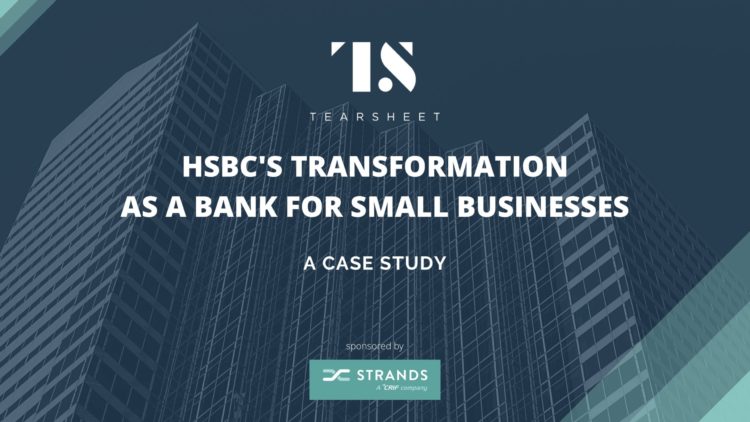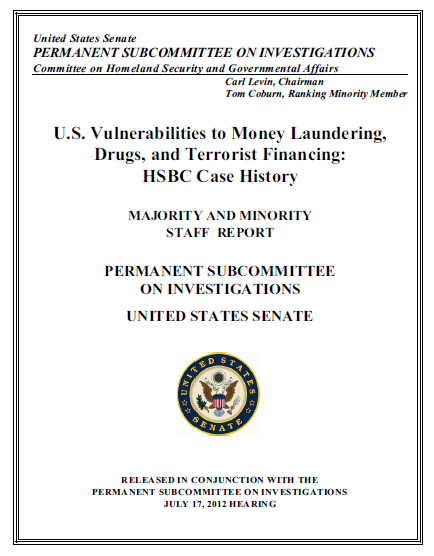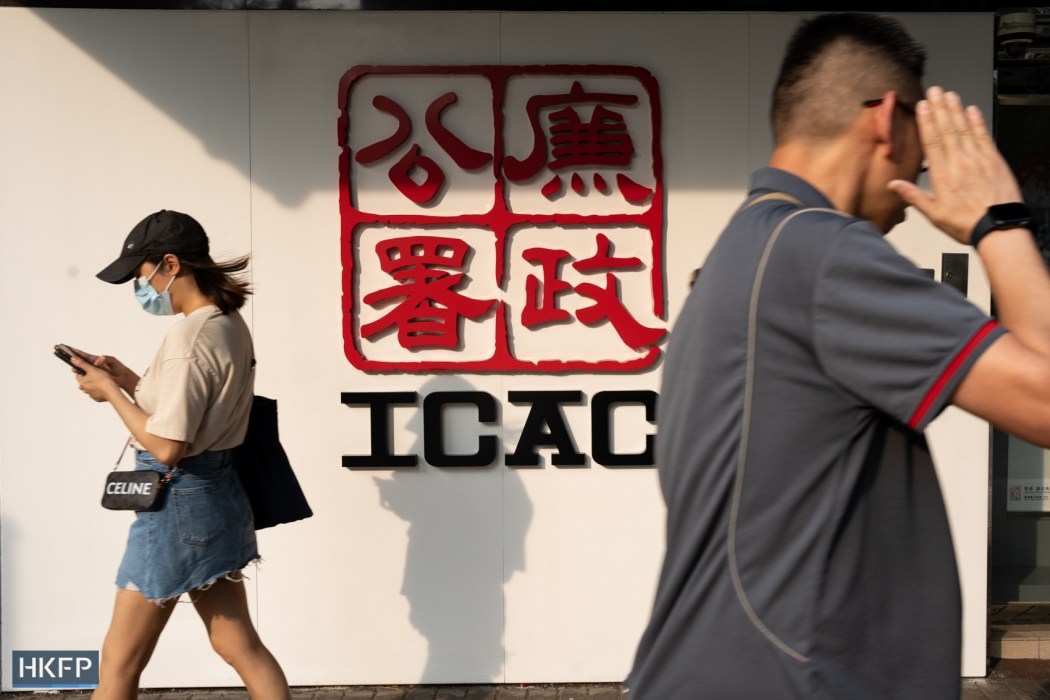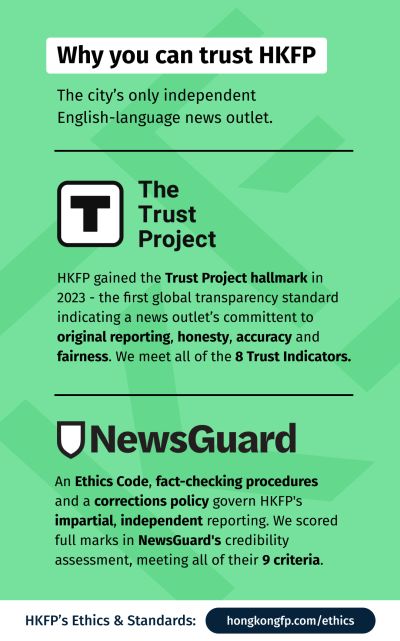HSBC: Case Study for Business Report Report
Executive summary.
HSBC is a British multinational banking and financial services corporation with its headquarters in London. Today, the bank is placed at position six globally, and it is the only European bank found in the top ten banking entities ranked worldwide (Kerr, 2021). Accordingly, the organization has suffered challenges that have impacted limited operations at HSBC. For instance, the organization has undergone atrocities of the newly imposed Brexit legislation that has led to decreased assets due to their relocation on HSBC entities based in the U.K. Moreover, technological advancement by their competitors has also affected the loss of clients thanks to their sufficient implementation of new technologies that have overwhelmed HSBC.
Further, the organization also proved that it is crucial to update new techniques and abandon the traditional; due to this, the organization has bowed to vulnerabilities of fraudulent activities that have crippled the bank’s assets. In this way, it is critical to adopt new measures that counter such infamous activities. Finally, the organization also suffered the recent surge in COVID 19 that led to massive losses. Ultimately, the organization has implemented strategies that are critical in ensuring efficient operational management of the HBSC Corporation. In this regard, the policies have incorporated theories that assist in enforcing the operational management strategies. Such include production overhaul, logistics improvement, personnel management, and financial strategies. The operational management practices require relevant recommendations to ensure they are adequately administered in the organization to result in productivity.

Introduction
HSBC, one of the largest business entities globally, has faced management challenges that have hindered effective operations in the organization. For instance, the ongoing Brexit laws have seen banking entities exiting the market. Additionally, the existing organizational culture has made it challenging to execute change efficiently. Over time, HSBC has had system failures due to obsolete technology that has hindered efficient service delivery, affecting performance and consumer unhappiness (Barber, 2021). Due to the constant nature of ever-vibrant technology, businesses’ banking systems require periodic changes. The deployment of advanced technology is a competitive advantage because it boosts consumer confidence in protecting their personal belongings and their banking privacy.
Along with upgrading software and acquiring new technology, the bank must purge outdated program versions that may surrender to vulnerabilities for a potential intrusion. Moreover, the lead acquisition that is bureaucratic has subjected the organization to incompetent management. Therefore, the organization needs to implement leadership initiatives through management theories to curb this undesired situation. Therefore, it is also critical to deploy remedies towards ensuring efficient service deliveries of the operational management practices this report encompasses.
Significant Challenges Faced by HSBC
The current geopolitical situation.
The British exit from the European Union has created an unforeseen situation for the U.K. and E.U. economies and, particularly, banking entities. In that circumstance, nearly ten percent of banks’ assets have relocated to the E.U. or are in that process (Martill & Staiger, 2018). To be precise, the HSCB bank has since been a victim of such inconsiderate Brexit legislation; some of the bank’s branches have relocated part of their assets, staff, legal entities, and operations to the E.U (Wilson & Spezzati, 2020). In addition, thousands of financial services positions have migrated, leading to fear for the future that new employment may be produced in the E.U. rather than the banks in the U.K. (Fernández et al., 2020). The inference is that HSBC holdings particularly suffered significantly from the unpredictability created by the 2016 Brexit election. For instance, the efficiency loss of assets and finance is predicted to be 5.6 percent for U.K. banks and 3.7 percent for Irish institutions (Fernández et al., 2020). The Brexit laws that untimely ravaged the banking holdings affected the closure of the entities due to bankruptcy.
The Global Technological Disruption to the Banking Sector
The new global technological advancement in banking industries has been received with great enthusiasm. At the same time, Vives (2019) accentuates that the traditional banking techniques are becoming archaic; in this way, HSBC has suffered tremendous drawbacks by still employing the now extinct techniques in banking. According to Cheng et al. (2019), the problem has been circumnavigated since rival banking entities such as the Agricultural Bank of China use the new methods; therefore, they have lost their customers. The deployment of advanced technology will mean that less human workforce will be needed; hence some employees will be relieved of their duties. Although the banks cannot permanently relieve employees of their duties, the significant technical infrastructure investment and change will take time to recoup in a fast-moving business. This recovery phase will be incredibly costly when things are changing so fast. The bank has to innovate and adapt quicker than its competitors to acquire its target markets locally, worldwide, and regionally.
Compliance and regulatory enforcement
HSBC has been criticized for its failure to deal with prevalent activities; the bank has suffered a series of fraudulent and money laundering activities. Hence, the firm has since incurred exorbitant losses in assets and finance; they also saw their clients migrating to their competitors, such as the flawless Agricultural Bank of China (Short, 2019). For instance, the recent case of Hong Kong’s financial regulator fined HSBC for regulatory breaches and internal control failings (Allabasc, 2021). The bank had to improve its internal audit procedures to prevent such occurrences from damaging its global reputation as a reliable banking body.
Corporate governance that is hierarchical and complex
As a hierarchical organization evolves within the organization, so does its structure. In that way, bureaucracies develop within the organization, which slow down, communication, decision-making, and action; thus, the business becomes a sluggish, instead of a sprightly, organization. Events move slowly because information and requests must travel up and then back down the chain of command. Bureaucracy is particularly harmful in fast-paced corporate as HSBC, and it requires to necessitate an immediate response. As a consequence, HSBC has been affected by bureaucracies as it attributes unproductivity in the organization; for instance, it isolates department members from other parts of the business, diminishing interdepartmental cooperation and communication (Hacker, 2017). Different departments must cultivate an ambivalent culture that cultivates other divisions’ interests and acquire a solution (Singh, 2009). Therefore, when feuds arise, the departments prioritize their agendas rather than the organizations.
The COVID 19 pandemic
COVID 19 pandemic negatively impacted HSBC holdings, and it still does despite the recent measures to counter the unprecedented event. In particular, the HSBC organization underwent a massive loss of profits amounting to billions (Shahzad, 2021). Moreover, it also impacted the staggering job loss of 3500 people working in various bank branches globally (Shahzad, 2021). The recent drawbacks led to ineffective production as the organization succumbed to a labor shortage. Thus, the company suffered severe losses as the productivity level became too low. (Battistella, 2020). Recently, the organization started recovering from the effects of the pandemic as new vaccine were discovered to combat the epidemic.
Evaluation of Improving the Operation Management
Production overhaul.
The theory under this operation management is Business process management, and the concept accentuates that continually optimizing, assessing, and automating production procedures are critical. As per Zelt et al. (2018), the process is gradual involving steps and cannot be achieved once; therefore, one needs to watch for prospective improvements continually. Regarding production overhaul and HSBC bank at the height of the COVID 19 pandemic, HSBC bank conceded to challenges resulting from losses. The corporation struggled to make ends meet in the serving industry. Therefore, to curb this menace, the organization needed to restructure its service rendering procedures since it needed operational adjustments.
Nonetheless, the goal is to fundamentally change how HSBC delivers services while considering the previously abandoned corporate strategy. Changing services processes is critical to bettering operation management since it directly impacts the company’s bottom line, lowering expenditures and increasing net income. In addition to that, the organization leaders must advance prudential initiatives such as giving people the authority and tools they need to succeed. In this regard, complete autonomy in sales and customer service increase team involvement and consumer delight. Clients who are extremely happy become the organization’s advocates, thus bringing in new business ideas and increasing sales and profits.
Logistics Improvement
The notion of high production and minimal losses has been the objective of companies; therefore, to better this, the trick is to recreate existing products to compete with other similar services. According to Chang (2019), business process re-engineering theory emphasizes that optimizing procedures is not the most efficient course of action. Rather than that, organizations re-engineer procedures to enhance productivity. Thence, rather than refining a new process, they re-create a product from the ground up that is frequently accomplished through technology (Chang, 2019). After all, organizations cannot substantially alter something worthless; this theory relates to HSBC and logistics improvement in that, for efficient productivity, it is essential to undesired products and services and improves them. For example,
In HSBC, logistics refers to the manner in which the banking corporation distributes products and services, as well as the instruments and business partners it utilizes to reduce the danger of material loss and obsolescence throughout the conveyance of services to consumers. As a result, recreating an effective logistics strategy enables the business to keep its timely delivery and high-quality products. Logistics optimization is crucial for long-term infrastructure projects at HSBC, such as project finance and export credit structures that will ensure success in their endeavors (Davradakis & Santos, 2019). An HSBC develops further aspires to develop creditworthiness and bankability to support the firm, and they must hire and educate employees with a high degree of dedication and expertise as a leadership effort to increase productivity. As a result of this tendency for applicants to place a premium on talent over engagement characteristics, effective interview tactics by leaders and peers are crucial. Additionally, engagement training and applauding those that prosper are effective techniques for developing appropriate behaviors. Interactional ability is a desired characteristic.
Personnel Management
The Six Sigma theory of operational management is applicable in personnel management in that it focuses on minimizing defects during production. Therefore it calls for a terrific production and sound personnel. For instance, it entails controlling products, measuring analysis, improving, and refinement. In this regard, it extends its concept towards personnel management (Gupta et al., 2020). An illustration is that if operation management at HSBC fosters one type of enhancement, it is a keen understanding that the company staff is still an essential component of today’s operational toolkit. A people management approach enhances a business’s operations by instilling in employees that the company’s achievement is also their success (Losada, 2009). Further, personnel management includes the organizational activities that supervise a firm’s personnel, including recruitment, employment, and benefits administration. Therefore, it is more prevalent in non-profit organizations and government agencies; human resource management may be more prevalent in the commercial sector.
However, HSBC holdings frequently considered the more administrative activities associated with filing paperwork and performing other routine chores, in contrast to human resource management, which is viewed as the entire development of an organization’s people and culture. Management of personnel is important anytime there are individuals to supervise. HSBC needs to incorporate prioritizing a culture of incentive above punishment towards employees. As a consequence, by rewarding learning and rewarding ventures beyond the box, a business may eradicate the fear of failure.
Financial Strategies
In this operational management, supply management theory can be applied as HSBC holdings have grown more complicated and global in scale, the strategic movement of resources, commodities, services, and information between suppliers, firms, and customers has developed into a separate sector. Maintaining a healthy and functioning supply chain benefits everyone involved in the organization, but several variables might slow things down. Compared to some of the other parts of operations management discussed thus far, supply chain management is a relatively new concept, coined in 1982 and widely employed in the 1990s by many organizations such as HSBC (Khan & Yu, 2019). In this regard, supply chain management is responsible for each contact point of a business’s product or service, from conception to sale, which makes it a critical part to manage because doing it right or wrong impacts efficiency, costs, and profitability.
In this way, a business’s financial strategy at HSBC primarily focuses on acquiring and using cash. The firm’s fundamental purpose is to establish an adequate and stable stream of funds to support the diverse business enterprises that foster present and future financial demands. Thus, effective HSBC financial strategy considers a variety of factors, including financial resources, cost structure analysis of projects, profit estimate, and accounting processes (Kadim et al., 2020). Providing the consumers with essentially sufficient supply, usage, and management of financial resources at the HSBC equals a desirable business environment. Nonetheless, it aligns the organization’s financial management with the corporate and business objectives of obtaining strategic superiority over their competitors. Sufficiently, it is critical to employ leadership initiative programs such as linking the HSBC to a higher purpose than profit.
Recommendations
The challenges of Brexit also present enormous opportunities, as corporates rethink their approach in the region. In this way, HSBC will continue to support businesses as they manage and grow their operations. Still, with Brexit, the key will be to make HSBC offerings available to them wherever they operate (Kalaitzake, 2021). The organization’s robust presence and availability of people on the ground in vital areas across the region mean HSBC can support businesses operating out of the E.U. or the U.K., and whether they are importers or exporters. Therefore, the organization can maximize its offering on the back of existing strong and established trade flows between the U.S. and, Europe, India, and Europe, or vice versa (Wee & Lacqua , 2021). In addition, the banks undertake more important roles as supporting their business clients by having a strong local footprint backed up the bank’s global presence.
Subsequently, the holdings services harness the experience of years of banking in Europe, understanding regulations and ways of doing business, as well as the insight of a regional and global team of experts. By boosting consumer confidence in the protection of their belongings and the privacy of their financial transactions, the use of innovative technology provides a competitive advantage (Pilot, 2015). HSBC wrote in an email that a simpler leadership framework with clear purpose and accountability would assist in speeding the transition and promoting development (David, 2021). The kind of modification will have no effect on the financial benefits of contractual workers.
HSBC Holdings, as of today, have experienced challenges that have undermined its routine operation, for instance, the rise of the COVID 19 pandemic, which deteriorated business operations. Moreover, the new geopolitical legislation has also crippled various banking entities belonging to HSBC, and fraudulent activities have also limited the bank operatives as the use of outdated technology has rendered the organization vulnerable to scammers (Trad et al., 2021). Finally, management practices that define leadership have also affected poor service delivery. On the other hand, leadership initiatives that proved critical in efficient productivity and service delivery include production overhaul, logistic improvement, personal management, and financial strategies (Wee et al., 2021). The mentioned initiative defined the face of HSBC organizations; they ensured efficient and effective operational management of the organization.
Zelt, S., Recker, J., Schmiedel, T., & vom Brocke, J. (2019). A theory of contingent business process management. Business Process Management Journal . Web.
Barber, A. (2021). HSBC: Learning without change ? U.K. banks and the lessons of the great financial crisis, (pp237–278). Web.
Gupta, S., Modgil, S., & Gunasekaran, A. (2020). Big data in lean six sigma: a review and further research directions. International Journal of Production Research , 58 (3), 947-969. Web.
Kalaitzake, M. (2021). Brexit for finance? Structural interdependence as a source of financial political power within UK-EU withdrawal negotiations. Review of International Political Economy , 28 (3), 479-504. Web.
David, P. (2021). Conceptual framework: Corporate responsibility, governance, business ethics, culture and the knowledge economy. SpringerLink, 7–52. Web.
Davradakis, E., & Santos, R. (2019). Blockchain, fintechs and their relevance for international financial institutions. Econstor.eu. Web.
Vives, X. (2019). Digital disruption in banking. Annual Review of Financial Economics , 11, 243-272. Web.
Chang, S. E., Chen, Y. C., & Wu, T. C. (2019). Exploring blockchain technology in international trade: Business process re-engineering for letter of credit. Industrial management & data systems.. Web.
Fernández, X. L., Paz-Saavedra, D., & Coto-Millán, P. (2020). The impact of Brexit on bank efficiency: evidence from U.K. and Ireland. finance research letters, 36, 101338. Web.
Hacker, P. (2017). Corporate governance for complex cryptocurrencies? A framework for stability and decision making in blockchain-based organizations. SSRN Electronic Journal . Web.
HSBC: Number of employees 2010-2021 | HSBC. (2021). Macrotrends.net. Web.
Kadim, A., Sunardi, N., & Husain, T. (2020). The modeling firm’s value based on financial ratios, intellectual capital and dividend policy. Accounting, 6 (5), 859–870. Web.
Kerr, W. R. (2021). The gift of global talent: how migration shapes business, economy et society. Stanford, California Stanford business books. Web.
Khan, S. A. R., & Yu, Z. (2019). Strategic supply chain management. In EAI/Springer innovations in communication and computing. Springer international publishing. Web.
Operation Management of HSBC – circle of business. (2021). circle of business. Web.
Short, J. L. (2019). The politics of regulatory enforcement and compliance: Theorizing and operationalizing political influences. Regulation & Governance , 15 (3), 653–685. Web/
Trad, A., Nakitende, M. G., & Oke, T. (2021). Tech-based enterprise control and audit for financial Crimes. handbook of research on theory and practice of financial crimes, 525–565. Web.
Martill, B., & Staiger, U. (Eds.). (2018). Brexit and beyond: Rethinking the futures of Europe . UCL Press.
Cheng, Y. S., Tsang, K. P., & Chung, M. K. (2019). State ownership, policy missions and commercial operation–A case study of the Agricultural Bank of China. The Chinese Economy , 52(2), 142-154. Web.
Allabasc, N. S. (2021). Global regulators assessments on operational risk management, international fines and sanctions violations . iKSP Journal of Business and Economics, 1 (2), 44-50. Web.
Shahzad, F., Yannan, D., Kamran, H. W., Suksatan, W., Nik Hashim, N. A. A., & Razzaq, A. (2021). Outbreak of epidemic diseases and stock returns: an event study of emerging economy. Economic Research-Ekonomska Istraživanj a, 1-20. Web.
Wee, D and Lacqua F (2021) ‘HSBC plans for permanent hybrid work model’ Web.
Battistella, P. (2020) ‘HSBC profits slump, plans restructuring’, Global Investor, p. N.PAG.
Losada, A. and Bajer, J. (2009) ‘How we transformed our culture in 100 days: the story behind an intensive culture change program at HSBC Argentina’, Strategic HR Review, 8(5), pp. 18–22. Web.
Pilot, J (2015) Driving sustainability to business success: the DS factor – management system integration and automation Hoboken: John Wiley & Sons
Singh Deo, A. N. (2009) ‘Gender Diversity and Leadership Inclusion: The keys to workplace success’, vikalpa: The Journal for Decision Makers , 34 (4), pp. 102–106.
Wee D, Wilson H and Choudhury A (2021) HSBC tells senior executives to prepare for management revamp. Web.
Wilson, H. and Spezzati, S. (2020) ‘HSBC overhauls European management ahead of major review’, Bloomberg.com, p. N.PAG.
- Chicago (A-D)
- Chicago (N-B)
IvyPanda. (2023, May 22). HSBC: Case Study for Business Report. https://ivypanda.com/essays/hsbc-case-study-for-business-report/
"HSBC: Case Study for Business Report." IvyPanda , 22 May 2023, ivypanda.com/essays/hsbc-case-study-for-business-report/.
IvyPanda . (2023) 'HSBC: Case Study for Business Report'. 22 May.
IvyPanda . 2023. "HSBC: Case Study for Business Report." May 22, 2023. https://ivypanda.com/essays/hsbc-case-study-for-business-report/.
1. IvyPanda . "HSBC: Case Study for Business Report." May 22, 2023. https://ivypanda.com/essays/hsbc-case-study-for-business-report/.
Bibliography
IvyPanda . "HSBC: Case Study for Business Report." May 22, 2023. https://ivypanda.com/essays/hsbc-case-study-for-business-report/.
- The Contemporary Development of HSBC and Products in APAC
- HSBC Bank Middle East Motivation Models and Workers Performance
- HSBC Company's Ads for Non- and Western Contexts
- Prime Chocolate's External Factors of Success
- Prime Chocolate's Internal Factors of Success
- Prime Chocolate's Finance and Human Resource Integration
- Apple’s Detrimental Risk: Case Study
- The Keystone XL Project's Issues and Recommendations
- All agencies in USA
- Los Angeles
- San Francisco
- Philadelphia
- All services in USA
- AI Marketing
- Digital Marketing
- Social Media Marketing
- Email Marketing
- Content Marketing
- All industries in USA
- Travel & Tourism
- Real Estate
- Fashion & Retail
- Media & Entertainment
- Food & Beverage
- Agency of the Month

- All agencies in the UK
- Bournemouth
- All services in the UK
- All industries in the UK

- All agencies in Canada
- All services in Canada
- Influencer Marketing
- All industries in Canada
- Travel Tourism
- All agencies in Australia
- All services in Australia
- PPC Marketing
- All industries in Australia
- Beauty & Cosmetics
- Hospitality

- All agencies in Europe
- All services in Europe
- Web Development
- All industries in Europe
- IT & Technology

- All agencies in Asia
- All services in Asia
- B2B Marketing
- All industries in Asia

- Agency News
- Marketing Resources
- Industry News

- Digital Ad Campaigns
- Case Studies
- Social Media Campaigns

- Marketing Blog
- Advertising
- Ecommerce Marketing

- Industrial Blog
- Fashion Marketing
- Sports Marketing
- Luxury Marketing
- Legal Marketing
- Healthcare Marketing

- Digital Marketing Tools
- Marketing Reporting Tools
- Digital Marketing Analytics Tools
- Email Marketing Tools
- Other Tools
- Social Media Management Tools
- Social Media Marketing Tools
- Social Media Analytics Tools
- Social Media Monitoring Tools
- Influencer Marketing Platforms
- Web Design Tools
- Landing Page Builders
- UI / UX Design Tools
- Website Builder Software
- Front End Development Tools
- Team Management Softw...
- Project Management Tools
- Agency Management Software
- Productivity Management Software
- Time Tracking Tools
- Sales Tools
- Sales Automation Tools
- Product Feed Management Tools
- Sales Enablement Tools
- AI Design Tools
- AI Content Tools
- AI Analytics Tools
- AI Marketing Tools
- Performance & Software
- Website Optimization Tools
- Content Delivery Network Tools
- Cybersecurity Software
- Web Accessibility Tools
Market your SaaS Tools and reach digital agencies & marketing professionals worldwide.
- All Categories in USA
- Artificial Intelligence Events
- Design & Development Events
- Digital Marketing Conferences
- Social Media Events

The Agency Partnerships Summit 2024

GYDA Summit 2024
Submit your exclusive marketing event today.
Submit your event to reach a wider audience! Whether it's digital marketing, AI, or any related theme, we would love to help spread the word out!
- All Categories in UK
- All Categories in Canada
- All Categories in Australia
- All Categories in Europe
- All Categories in Asia

HSBC’s Secret to Success: Marketing Strategies That Work
When you speak of the international finance world, HSBC is a towering giant, its name a shorthand for financial marketing tactics with a presence in more than 65 countries. But underneath this front of success lies a captivating tale of adaptability plus innovation.
With US$3.091 trillion in total assets as of June 2023, HSBC remains Europe’s largest bank; it holds a staggering $14.3 trillion in assets under custody (AUC) and $5.7 trillion in assets under administration (AUA) in 2023, demonstrating its immense financial clout.
And, how has that financial services holding company based in the United Kingdom, established itself as a leader in financial services?
So, keep reading and embark on a journey into the HSBC marketing galaxy.
Overview of HSBC’s Marketing Approach
The financial services giant operates a multifaceted marketing strategy surrounding the 4Ps of marketing – product, price, place, and promotion. This strategic approach has enabled HSBC to establish a formidable global presence and cater to the various needs of its customers, including private banking, wealth management and retail banking, investment banking & global banking, and commercial banking.
When it comes to pricing decisions, HSBC combines factors such as customer loyalty, product usage, and risk management into its pricing strategy. This subtle approach allows the bank to tailor its pricing strategies to specific customer segments and market conditions, maximizing both customer satisfaction & profitability.
What’s more, the bank’s promotional activities focus on brand awareness, customer engagement, and digital marketing campaigns – in addition to traditional methods and sponsorships.
What’s more, the bank’s promotional activities focus on brand awareness, customer engagement, and digital marketing campaigns – in addition to traditional methods and sponsorships. Additionally, its marketing strategy is firmly rooted in customer satisfaction and long-term relationships, tailoring its product offerings, and promotional activities accordingly. This customer-centric approach has enabled HSBC to have a market capitalization of approximately 116.6 billion euros .
The Evolution of HSBC Marketing Strategy
Our ambition is to be the preferred international financial partner for our clients. Noel Quinn, Group Chief Executive
To unlock the secrets of HSBC’s marketing approach, we must embark on a tour through time, immersing ourselves in the revolutionary era that redefines its connection with its global target.
The marketing strategy of The World’s Local Bank has undergone a phenomenal transformation, reflecting the needs of its audience and the entire financial terrain. In its productive years, HSBC relied on conventional/traditional marketing channels, like print and TV ads, to reach its audience. However, as the internet and social media emerged as the prior communication tools, HSBC shifted its focus toward digital marketing, evolving as an adopter of this revolutionary approach.
The bank’s earlier adoption of social media proved to be a stroke of marketing genius. By showing a strong presence on popular platforms like Facebook, Twitter, and Instagram, the bank humanized its brand, crafting a direct line of communication with its target. In other words, HSBC did what it needed to do on social media as a fintech company .
As we can see in the same manner in PayPal’s marketing strategy , through engaging content , interactive campaigns, and personalized interactions, HSBC cultivated a sense of community.
Through the years, HSBC has become one of the pioneers of mobile banking by crafting UX-powered platforms & apps that seamlessly integrate with its digital marketing efforts. This approach delivered customers convenience, allowing them to access their finances anytime, anywhere. For instance, the HSBC mobile app quickly evolved into a universal tool, further setting its position at the forefront of digital banking.
HSBC’s Branding and Positioning in the Global Market
Time to explore the brand’s core values.
At the heart of HSBC’s brand lies a dedication to supporting its customers to reach their economic objectives. The bank’s brand essence is encapsulated in its tagline, The World’s Local Bank , reflecting its ability to deliver global reach while maintaining a deep understanding of local markets & needs.
Noteworthy efforts include global marketing campaigns, strategic sponsorship programs with entities like Formula One and The Rugby World Cup , and a robust digital presence, all contributing to brand visibility & customer engagement. In the international market, HSBC’s brand is characterized by dependability and expertise with local insights and a dedication to innovation and customer-centricity.
Source: https://www.hsbc.com/
HSBC’s efforts regarding tech & innovation not only reflect a dedication to staying at the forefront of the financial industry and set the bank as a modern plus accessible banking solution. So much so that, the well-known bank is operating a dynamic & inclusive work culture, encouraging its employees to focus on skill development for the future.
That approach, of course, strengthens the internal capabilities while enhancing the brand’s image as a forward-thinking institution that invests in the growth and well-being of its people worldwide.
What’s more, HSBC’s dedication to sustainability is supported by its financial performance, with total assets reaching US$3.091 trillion as of June 2023 and a customer base of approximately 45 million worldwide. The brand’s valuation at US$12.7 billion not only highlights its financial prowess but also solidifies its position as one of the most valuable financial brands globally.
Key Components of HSBC’s Marketing Strategy
As mentioned, HSBC’s marketing strategy revolves around designating a robust brand identity, segmenting its customer base, using various digital marketing channels, and making data-driven decisions.
We also know that the global bank invests in advertising campaigns and marketing efforts that showcase its global reach, financial expertise, and unwavering commitment to customer service. More specifically? Keep reading.
Customer-Centric Approaches in HSBC’s Strategy
We are equally committed to ensuring there are no unnecessary barriers to finance for our customers. We aim to create a welcoming, inclusive, and accessible banking experience. HSBC Holdings Annual Report and Accounts 2022
As users already know and experience, the marketing strategy of HSBC Bank is deeply rooted in customer-centricity. So much so that the marketing team of the finance institution places the needs of its customers & prospects at the heart of every decision.
Understanding the audience and its financial objectives, HSBC segments its customer base. While doing so, the bank analyzes customers’ behavior patterns and tailors its marketing strategy accordingly – offerings, service interactions, messages, etc. And that kind of customer-centered marketing approach brings a sense of connection and trust.
Relatedly, the bank is known for prioritizing customer engagement & experience; by encouraging ongoing interactions beyond standard banking operations. The bank actively reaches customers (and prospects) via various channels – website, mobile app, social media platforms, and in-person interactions. Here is a related statement:
For our customers and colleagues, we improved the accessibility of our public websites, mobile applications, and internal systems. AbilityNet, the digital accessibility charity, benchmarked HSBC as having the most accessible website compared with other local competitor banks in 10 of 13 of our key Wealth and Personal Banking markets. HSBC Holdings Annual Report and Accounts 2022
That approach helps the HSBC customer help team to assemble feedback, address concerns promptly, and provide timely updates on relevant financial matters.
It is also known that the bank is transforming its entire digital systems, both external and internal, to be accessible. According to the bank’s annual report, HSBC engaged over 2K colleagues in digital accessibility awareness, sponsored by the takeoff of a “digital accessibility hub.” The hub acquired the best digital accessibility award at the previous year’s Digital Impact Awards.
Product and Service Innovation at HSBC
Another key element supporting HSBC’s marketing strategy involves the continuous development of new products and services tailored to meet the needs of its customers. In recent years, the bank has made remarkable progress in various areas.
As one of them, the bank has dedicated noteworthy resources to improve its digital banking platforms, offering customers a seamless way to manage their finances.
HSBC offers various investment options & solutions to help its customers meet their long-term financial needs & objectives. The bank’s investment advisors provide personalized advice and guidance to help customers make informed investment decisions.
Digital Transformation in HSBC’s Marketing
It’s a general fact now that financial institutions should stay ahead of the curve by embracing digital transformation with open arms; like HSBC does. With an annual ICT spending of $10.5 billion in 2022 , the global finance powerhouse is showcasing its commitment to revolutionizing the banking landscape. From acquiring cutting-edge software to partnering with top-tier ICT service providers and finance marketing agencies , HSBC is leaving no stone unturned in its quest to deliver a seamless and personalized banking experience for its customers across the globe.
Leveraging Technology for Enhanced Customer Experience
As we develop our content strategy , we can assess our customers’ need for certain information by promoting key articles, research, or topics, and seeing what kind of response we get. This kind of insight is invaluable in our mission to become more customer-centric. Amanda Rendle Global Head of Marketing, Commercial Banking, and Global Banking and Markets
As mentioned above, HSBC, became one of the pioneers of digital banking; in previous years, the bank launched its digital-only bank, a standalone platform that provides a seamless and convenient banking experience.
The move which aims to cater to the evolving needs of tech-savvy customers, eliminated the need for physical interactions in money transferring, account opening, and more. In addition to offering a convenient banking experience to customers, that kind of banking option allowed users to access their accounts through all digital platforms.
Simultaneously, the bank started investing in enhancing its mobile app within its marketing strategy, with its improved security features & user-friendly interface which allows customers to manage their entire finances on the go – account management, bill payments, money transfers, and custom financial insights.
At that point, we also need to mention the bank’s data-driven approach. As a huge part of HSBC’s digital marketing strategy, data analytics, and artificial intelligence has been used for a remarkable time to gain deeper insights into customer behavior, preferences, and financial needs. These insights enable the finance giant to customize its offerings and services to each customer.
Finally, financial cooperation actively explores the potential of blockchain and distributed ledger technology (DLT) to improve its operational processes while offering full transparency. In that way, HSBC executes supply chain operations and complies with regulations.
HSBC’s Global Marketing Strategy
From now on, we’ve highlighted that HSBC’s global marketing strategy is a dynamic approach that reflects the bank’s commitment to comprehending its diverse customer base across the globe. But how can they do that? Start exploring.
Adapting to Diverse Markets: HSBC’s Regional Strategies
HSBC’s success (both digital and corporational) stems, in part, from its knack for tailoring strategies to the unique characteristics of the markets it serves. The bank acknowledges that each region shows its blend of economic, cultural, and regulatory factors, necessitating a slight approach to marketing and business strategies.
For instance, in Asia (China, India, and Southeast Asia), the bank has customized its offerings to align with the features of the Asian market; like providing Shariah-compliant products in Muslim-majority countries in the region. What’s more, in that region, the bank offers products like UnionPay debit/credit cards while supporting economic growth via products like microfinance loans.
Similarly, in the United Kingdom, France, Spain, and other European countries, HSBC delivers specialized solutions such as wealth management. As for the United States, Canada, and Mexico, the bank offers a diverse range of retail banking services by focusing on local preferences.
To get insights about local preferences, the bank uses HSBC Global Network, boasting over 6K branches in more than 70 countries, which stands out as an element.
Building a Global Brand: Lessons from HSBC
Lesson #1 – “The World’s Local Bank” Positioning : HSBC emphasizes its capacity to provide both global reach and local expertise, placing itself as a long-time & trusted partner for customers guiding the world of finance.
Lesson #2 – Building Sponsorship & Partnerships: The banking corporation strategically associates with organizations and events that align with its brand values plus target audience preferences, raising brand awareness and gaining visibility.
Lesson #3 – Local Insights and Cultural Sensitivity: As key players in the marketing mix of HSBC, local understanding and cultural sensitivity ensure the bank’s marketing campaigns are relevant, respectful, and effective in diverse markets.
Lesson #4 – Multi-channel Marketing Approach: By utilizing its international network and understanding, the finance corporation operates a multi-channel marketing approach, using a mix of traditional and digital channels to reach its target.
Lesson #5 – Bold Brand Identity and Messaging: Through its global marketing efforts, HSBC has successfully established a cohesive brand image with consistent messaging and a recognizable brand identity.
Analyzing the Success of HSBC’s Marketing Strategies
HSBC is also known for its track record of creativity in its digital marketing efforts. Let’s take a look at some of the campaigns.
Case Studies: HSBC’s Most Successful Campaigns
The home to so much more.
The campaign created by well-known Wunderman Thompson refers to HSBC UK’s brand values, emphasizing openness and connection just after Brexit. The campaign with the tagline “We are not an island. We’re home to so much more,” delves into the idea of home and its true significance.
Source: https://www.wundermanthompson.com/work/home-to-so-much-more
The World’s Local Bank
The campaign achieved notable success by highlighting the company’s capacity to offer a combination of global reach and local expertise, striking a chord with customers in markets globally. The campaign effectively utilized a range of digital channels, such as social media, video content, and targeted advertising, to communicate that HSBC comprehends and addresses the distinct needs of its customers in diverse regions.
Another HSBC X Wunderman Thompson collaboration, “Borders” focuses on breaking down barriers and fostering global connections. In addition to highlighting the importance of human interaction and the bank’s role in it, the emotional digital marketing campaign showcases HSBC’s commitment to understanding and serving its global customer base.
HSBC’s digital marketing campaigns are highly targeted and tailored to meet the unique needs of its diverse customer base from all around the globe. In its digital marketing efforts, the finance giant uses customer data analytics to segment audiences, personalize messaging, and optimize campaign performance, ensuring maximum impact.
HSBC’s ability to connect with its global customer base in a meaningful way is evident in its innovative tactics, data-driven insights, and commitment to understanding local needs. As a result, HSBC is a leader in the digital marketing sphere.
Share this post

Related Posts

Subscribe to keep up with fresh news and exciting updates. We promise not to spam you!
This website uses cookies. Continued use of this website indicates that you have read and agree to our Terms & Conditions and Privacy Policy .

Case Study: HSBC’S transformation as a bank for small business
- HSBC Kinetic is a bold move by the 6th largest bank in the world.
- It’s an app-only digital bank servicing small businesses and a chance for the 160 year old bank to remake itself.
Email a Friend

0 comments on “Case Study: HSBC’S transformation as a bank for small business”
You must be logged in the post a comment.
- Sort by Newest
The key to onboarding good businesses (at scale)
- The challenges of business identity can exacerbate credit accessibility, fraud risks, and regulatory compliance issues.
- Hany Fam, Founder & CEO of Markaaz, shares an innovative and scalable approach to KYB which includes resolution, verification, and monitoring.
Why every bank should make behavioral banking their next superpower
- It’s become harder to stay competitive with a one-size-fits-all approach to customer experience. Banks can use advanced analytics to understand their customers on a deeper level and identify the right products based on life stage and lifestyle.
- The key to delivering personalized services lies in fostering transparency and trust with cardholders about their data usage, along with banks obtaining clear consent and employing robust data governance to oversee these services.
Gen Z’s impact on credit is bigger than you may think
- Even through they're still quite young, Gen Z has already made a mark on financial services.
- Marqeta CEO Simon Khalaf explains why Gen Z is positioned to have a monumental impact on the business of lending
‘Since the Diners Card, it’s just been a distribution game’: Exploring the future of credit with Marqeta’s Simon Khalaf
- Credit card technology hasn't matured much over the past few decades as consumers are becoming increasingly savvy about using credit to further their financial goals.
- This is fueling the growth of credit for brands seeking a new “homepage” of their digital experience. Marqeta CEO Simon Khalaf joins us on the podcast to discuss.
Retailers: We have a holiday gift for you. Unwrap the new loyalty and digital engagement tool
- Consumers spent $38 billion online during Thanksgiving weekend, an almost 8% jump year-over-year, far outstripping expectations.
- Now, by offering personalized rewards and flexible payment options, brands can reap the benefits of greater customer loyalty without impacting their bottom line.
Academia.edu no longer supports Internet Explorer.
To browse Academia.edu and the wider internet faster and more securely, please take a few seconds to upgrade your browser .
Enter the email address you signed up with and we'll email you a reset link.
- We're Hiring!
- Help Center

Responsible Business in Practice: Case Studies (Case Studies on HSBC, JPMorgan, HP, Walmart and Chevron)

In this chapter, actual business practices are examined by analysing the corporate activities of five particular companies over several years. Apparently, companies' assertions regarding their business behaviour communicated in their annual sustainability, corporate (social) responsibility or (global) citizenship reports often diverge significantly from reality. To illustrate this gap between theory and practice this chapter is based on a media analysis, which was conducted with the help of a database provided by RepRisk AG, Switzerland. This database captures negative media as presented in newspaper articles, NGO-reports and other statements amongst others. While a single press article in many cases only shows the tip of the iceberg, the whole story usually develops over several years before it is fully unfolded. Hence, uncovered scandals are never only snapshots of dubious operations. Each scandal tells a story about a single incident, which is often embedded in a bigger picture of even more incidents occurring over time, leaving an impression of systematic unjust practices. After explaining the methodology of this case study in the first section, more background information on business activities globally is provided in a subsequent section. Then each of the five company cases is presented in detail, which includes information on the respective CSR or sustainability report, information on the particular CSR and sustainability strategy, a contrasting account of the business reality of each company and an analysis of their latest communication in light of these incidents. Each case closes with a summary and conclusion.
Related Papers
Alicia Hennig
In the aftermath of the global financial crisis apparently little has changed. Financial institutions continue to do “business as usual”. Major players in the financial sector still violate national law, and are complicit in environmental destruction and human rights infringements due to questionable lending practices. While companies frequently boast themselves in public of being members of certain initiatives or following specific, globally recognised guidelines and principles, in business reality companies often tend to fall short with their aspirations communicated publicly. This paper claims that corporate social responsibility and sustainability strategies as well as current measures implemented are not effective enough to induce a substantial change with regard to more responsible business behaviour. Voluntary memberships at initiatives, commitments to globally recognised principles and guidelines, as well as internal policies are frequently disregarded when it comes to investment decisions. Therefore, after more than 20 years practice of voluntary measures it is about time for a critical assessment with regard to their effectiveness in changing corporate behaviour to the good. This paper aims to present a more differentiated and comprehensive picture of the business reality, particularly in the finance sector. For this purpose, publicly communicated corporate responsibility approaches by two major financial institutions are presented and contrasted with the actual business practice.
Lea von Martius
Theo LeQuesne
This thesis examines the role that story-based strategy and narrative oriented communications play in the Climate Justice Movement’s counterhegemonic struggle against neoliberal discursive hegemony. As more and more people come to accept the reality of the climate crisis a new struggle is emerging, a discursive struggle over what the crisis actually means. This project identifies an ideological polarization in which climate justice represents a socially transformative bottom up approach to climate change, while hegemonic neoliberal elites advocate for market solutions, technofixes and minimal social change. My project therefore places emphasis upon the role that ideology, norms and values play in shaping attitudes towards climate change solutions and societal transformation. I use Laclau and Mouffe’s theory of discourse and hegemony to provide a framework for studying the rhetoric and implications of climate change discourse. I examine two case studies in the United States: The Our Power Campaign in Richmond, California and the Fossil Free UC fossil fuel divestment campaign as sites of clear hegemonic struggle over how climate change is understood. Together these sites provide a valuable cross-section of climate justice organizations in the US. I discuss the implications of their communications strategies, and in particular what Reinsborough and Canning call story-based strategy. I pay close attention to how reframing narratives help restructure public discourse, as well as the successes and limitations of these discursive interventions. I have found that the strategies discussed in these case studies are beginning to shift discursive conditions around solutions to climate change and can be refined, reworked and applied to many other climate justice campaigns.
Hershey H Friedman
This paper examines whether corruption and dishonesty are still major issues after huge debacles such as Enron and the Great Recession of 2008. Sadly, little has changed and the moral compass is broken at many organizations; greed still reigns. Examples from the financial, automobile, retailing, and accounting industries are provided to demonstrate that many leaders have no qualms about selling dangerous products or using dubious accounting to maximize profit. Apparently, little has changed: organizational leaders and boards may be paying lip service to the importance of integrity and ethics but are not practicing what they preach
Theory in Action
Efforts to ensure that people in all neighborhoods have access to healthy, affordable food are essential in the movement for food justice. An organization called the Partnership for a Healthier America has taken on food access as one of its five core areas, and because this organization has the backing of high-profile state representatives and considerable resources, its efforts matter. The Partnership’s biggest accomplishments to date involve negotiating “meaningful commitments” from private-sector actors, including the biggest food retailer in the United States, Walmart. In this paper I examine the terms of Walmart’s pledge to the Partnership for a Healthier America, and question whether the commitment from this massive corporation is likely to contribute to or obstruct actual food justice. I argue that the relationships this non-profit organization cultivates between the state and the private-sector insulate an entity such as Walmart from regulatory scrutiny, and generate positive publicity and good will for a company that may be doing little more than expanding its market.
Shikha Silliman Bhattacharjee
This report presents new research on violations of international labour standards in Walmart garment supplier factories. Information was collected through interviews and focus group discussions including 344 workers engaged in Walmart supply chains in Bangladesh, Cambodia and India; and an in-depth case study, spanning 8 months, of working conditions in an Indonesian Walmart supplier employing 3,800 Indonesian contract workers. These findings, collected between December 2012 and May 2016, are situated in context of both previous studies on Walmart supply chains and the broader context of the global production network.
wilbert kaluasa
Astha Singh
SUMMARY This article traces the strategic initiatives that Walmart undertook over the last decade to implement its ambitious vision of selling more sustainable products. This effort has been characterized by a gradual shift away from customer-facing initiatives aimed at labeling sustainable products toward supplier-facing initiatives targeted at improving environmental or social performance without raising customer prices. It highlights the role of institutional intermediaries, transaction costs, and experiential learning in shaping firms' capabilities to translate ambitious sustainability goals into operable, mass-market initiatives.
Angela Kalyta
How do the CSR activities of transnational companies effect the institutional development of the developing countries they source from? This paper argues that the welfare institutions built by transnational companies in industrializing countries are shaped by the interaction between political economic dynamics of their home and their host countries. Using a Varieties of Capitalism (Hall & Soskice 2001) perspective, I will demonstrate how Liberal institutions shaped the “North-American” Alliance for Bangladesh Worker Safety, and a combination of Coordinated institutions in Europe and Bangladesh created an unprecedented opportunity for coordinated CSR: the “European” Accord on Building and Factory Safety in Bangladesh, a widely adopted and binding transnational union agreement. I will conclude with a discussion of the barriers to corporatism experienced by the Accord and the surprising coordination between the transnational apparel brands and unions against factory owners to consider the challenges that transnational coordination poses to the traditional social partners when they expand into transnational, vertically disintegrated supply chains. This is not simply a case of companies exporting their institutional models. Real adjustments must be made for the traditional bipartite model to incorporate a new third actor, the local factory manager, who often comes with corrupt ties to the host government. As the first widely adopted coordinated CSR program in apparel, the way the Accord does or does not find a way to foster coordination with this new social partner will have a large impact on the perceived viability of this institutional experiment in public/private governance.
Arijana Kordic
The thesis deals with the corporate accountability for human rights abuses with accent on developing countries. It brings the definition of corporate social accountability and highlights its role in addressing the issue. Development of the international framework by specific international organizations such as United Nations, International Labour Organization and Organization for Economic Co–operation and Development is described as well as hard and soft law mechanisms. The thesis tests the effectiveness of these mechanisms on the case study ‘Yadana pipeline project’ in Myanmar and assesses the compliance with their standards in order to show the extent of corporate accountability. The presented case shows the impact of corporations on environment, living conditions and enjoyment of human rights in the area they operate suggests the necessity for effective mechanism for addressing corporate accountability.
RELATED PAPERS
Md Rezaul Karim
IWE Working Papers, No. 201
Csaba Weiner
Diana Aguiar
Energy, Resource Extraction and Society. Impacts and Contested Futures
Roberto Cantoni , Aleksandra Lis , Agata Stasik
Polar Record
Indra Overland , Jakub M Godzimirski
Hester Samoray
Journal of Cultural Economy
Review of International Studies
Genevieve LeBaron , Jane Lister
Judith Kimerling
Maria B Hartley
Alhaji Goni Alkali
The International Lawyer
Matteo Winkler
KINGSLY AWANG OLLONG
Labor Studies Journal
Juan De Lara
Nina Grellmann
Puja Thakur
Dupsy Adesina-Oyeneyin
Joshua Pearce
RELATED TOPICS
- We're Hiring!
- Help Center
- Find new research papers in:
- Health Sciences
- Earth Sciences
- Cognitive Science
- Mathematics
- Computer Science
- Academia ©2024
United States
Senate permanent subcommittee on investigations hsbc money laundering case history, december 16, 2012.

U.S. Vulnerabilities to Money Laundering, Drugs, and Terrorist Financing: HSBC Case History
- July 17, 2012
HSBC Case Study. To examine the current money laundering and terrorist financing threats associated with correspondent banking, the Subcommittee selected HSBC as a case study. HSBC is one of the largest financial institutions in the world, with over $2.5 trillion in assets, 89 million customers, 300,000 employees, and 2011 profits of nearly $22 billion. HSBC, whose initials originally stood for Hong Kong Shanghai Banking Corporation, now has operations in over 80 countries, with hundreds of affiliates spanning the globe. Its parent corporation, HSBC Holdings plc, called “HSBC Group,” is headquartered in London, and its Chief Executive Officer is located in Hong Kong. Its key U.S. affiliate is HSBC Bank USA N.A. (HBUS). HBUS operates more than 470 bank branches throughout the United States, manages assets totaling about $200 billion, and serves around 3.8 million customers. It holds a national bank charter, and its primary regulator is the U.S. Office of the Comptroller of the Currency (OCC), which is part of the U.S. Treasury Department. HBUS is headquartered in McLean, Virginia, but has its principal office in New York City. HSBC acquired its U.S. presence by purchasing several U.S. financial institutions, including Marine Midland Bank and Republic National Bank of New York. A senior HSBC executive told the Subcommittee that HSBC acquired its U.S. affiliate, not just to compete with other U.S. banks for U.S. clients, but primarily to provide a U.S. platform to its non-U.S. clients and to use its U.S. platform as a selling point to attract still more non-U.S. clients. HSBC operates in many jurisdictions with weak AML controls, high risk clients, and high risk financial activities including Asia, Middle East, and Africa. Over the past ten years, HSBC has also acquired affiliates throughout Latin America. In many of these countries, the HSBC affiliate provides correspondent accounts to foreign financial institutions that, among other services, are interested in acquiring access to U.S. dollar wire transfers, foreign exchange, and other services. As a consequence, HSBC’s U.S. affiliate, HBUS, is required to interact with other HSBC affiliates and foreign financial institutions that face substantial AML challenges, often operate under weaker AML requirements, and may not be as familiar with, or respectful of, the tighter AML controls in the United States. HBUS’ correspondent services, thus, provide policymakers with a window into the vast array of money laundering and terrorist financing risks confronting the U.S. affiliates of global banks. … Disregarding Links to Terrorism. For decades, HSBC has been one of the most active global banks in the Middle East, Asia, and Africa, despite being aware of the terrorist financing risks in those regions. In particular, HSBC has been active in Saudi Arabia, conducting substantial banking activities through affiliates as well as doing business with Saudi Arabia’s largest private financial institution, Al Rajhi Bank. After the 9-11 terrorist attack in 2001, evidence began to emerge that Al Rajhi Bank and some of its owners had links to financing organizations associated with terrorism, including evidence that the bank’s key founder was an early financial benefactor of al Qaeda. In 2005, HSBC announced internally that its affiliates should sever ties with Al Rajhi Bank, but then reversed itself four months later, leaving the decision up to each affiliate. HSBC Middle East, among other HSBC affiliates, continued to do business with the bank. Due to terrorist financing concerns, HBUS closed the correspondent banking and banknotes accounts it had provided to Al Rajhi Bank. For nearly two years, HBUS Compliance personnel resisted pressure from HSBC personnel in the Middle East and United States to resume business ties with Al Rajhi Bank. In December 2006, however, after Al Rajhi Bank threatened to pull all of its business from HSBC unless it regained access to HBUS’ U.S. banknotes program, HBUS agreed to resume supplying Al Rajhi Bank with shipments of U.S. dollars. Despite ongoing troubling information, HBUS provided nearly $1 billion in U.S. dollars to Al Rajhi Bank until 2010, when HSBC decided, on a global basis, to exit the U.S. banknotes business. HBUS also supplied U.S. dollars to two other banks, Islami Bank Bangladesh Ltd. and Social Islami Bank, despite evidence of links to terrorist financing. Each of these specific cases shows how a global bank can pressure its U.S. affiliate to provide banks in countries at high risk of terrorist financing with access to U.S. dollars and the U.S. financial system. … A. Findings This Report makes the following findings of fact. (1) Longstanding Severe AML Deficiencies. HBUS operated its correspondent accounts for foreign financial institutions with longstanding, severe AML deficiencies, including a dysfunctional AML monitoring system for account and wire transfer activity, an unacceptable backlog of 17,000 unreviewed alerts, insufficient staffing, inappropriate country and client risk assessments, and late or missing Suspicious Activity Reports, exposing the United States. to money laundering, drug trafficking, and terrorist financing risks. (2) Taking on High Risk Affiliates. HBUS failed to assess the AML risks associated with HSBC affiliates before opening correspondent accounts for them, failed to identify high risk affiliates, and failed for years to treat HBMX as a high risk accountholder. (3) Circumventing OFAC Prohibitions. For years in connection with Iranian U-turn transactions, HSBC allowed two non-U.S. affiliates to engage in conduct to avoid triggering the OFAC filter and individualized transaction reviews. While HBUS insisted, when asked, that HSBC affiliates provide fully transparent transaction information, when it obtained evidence that some affiliates were acting to circumvent the OFAC filter, HBUS failed to take decisive action to confront those affiliates and put an end to conduct which even some within the bank viewed as deceptive. (4) Disregarding Terrorist Links. HBUS provided U.S. correspondent accounts to some foreign banks despite evidence of links to terrorist financing. (5) Clearing Suspicious Bulk Travelers Cheques. In less than four years, HBUS cleared over $290 million in sequentially numbered, illegibly signed, bulk U.S. dollar travelers cheques for Hokuriku Bank, which could not explain why its clients were regularly depositing up to $500,000 or more per day in U.S. dollar travelers cheques obtained in Russia into Japanese accounts, supposedly for selling used cars; even after learning of Hokuriku’s poor AML controls, HBUS continued to do business with the bank. (6) Offering Bearer Share Accounts. Over the course of a decade, HBUS opened over 2,000 high risk bearer share corporate accounts with inadequate AML controls. (7) Allowing AML Problems to Fester. The OCC allowed HBUS’ AML deficiencies to fester for years, in part due to treating HBUS’ AML problems as consumer compliance matters rather than safety and soundness problems, failing to make timely use of formal and informal enforcement actions to compel AML reforms at the bank, and focusing on AML issues in specific HBUS banking units without also viewing them on an institution-wide basis.
Share this:
- Work & Careers
- Life & Arts
Case study: HSBC
- Case study: HSBC on x (opens in a new window)
- Case study: HSBC on facebook (opens in a new window)
- Case study: HSBC on linkedin (opens in a new window)
- Case study: HSBC on whatsapp (opens in a new window)
By Geoff Nairn
Simply sign up to the UK banks myFT Digest -- delivered directly to your inbox.
Like it or not, banking is moving online in a big way. But as the number of online banking customers grows, so too do the security risks, particularly for high-value commercial banking transactions which make a tempting target for cybercriminals.
HSBC , the global banking group, wants to encourage more commercial customers to use internet banking. But it has long recognised that the security measures used on its personal banking website – a combination of PIN and challenge phrase – were insufficient for business accounts.
To allay widespread fears about internet security among its personal banking customers, HSBC promises to refund the amount of any unauthorised transaction conducted online.
But for commercial customers, the value of transactions can be quite high – HSBC’s UK commercial customers have a £100,000 daily transaction limit – and the risk to the bank is consequently much greater.
To reduce the risk, HSBC recognised it needed a way to better authenticate its commercial users.
“Most banks just re-badge their personal internet banking offering for commercial customers but we recognised that businesses need greater functionality and also better security,” says Trevor Oney, Senior Manager, HSBC’s senior manager for e-commercial banking in the UK.
In 2002, HSBC began to use digital certificates to authenticate its UK commercial banking customers.
“It was spectacularly successful and the fraud levels we got using digital certificates were truly minuscule,” says Mr Oney.
Nevertheless, the use of digital certificates created support headaches for the bank. As the certificate – a small piece of software code – is installed on a specific PC, the customer must always use the same computer to access their bank account.
In addition, certificates periodically expire, obliging customers to download new ones. Sometimes, the certificate was deleted by accident – when a new operating system was installed, for example.
According to Mr Oney, these issues led HSBC to look at a less “intimidating” way to protect its commercial banking customers.
Security experts have long argued that the best way to prove that people really are who they claim to be is using “two factor” strong authentication and this is the approach HSBC chose. With two-factor authentication, the user can only access the site if they successfully pass two separate challenges: one based on something they know, such as a PIN or mother’s maiden name; and the other based on something they own.
In the case of the HSBC, the object of desire is a small electronic device called a “token” which generates a fresh password each time a button is pressed.
The tokens are supplied by Vasco , a Belgium-based company specialised in authentication technologies.
Tokens have been used for security applications for some time– one common application is to authenticate remote users trying to access a corporate intranet –but most deployments to date have been limited in scale.
Nevertheless, for HSBC’s internet banking initiative, the bank ultimately wants to distribute the devices to all its commercial banking customers that have registered to use online banking. That is around 400,000 users or half the total number of business customers that HSBC has in the UK.
The high penetration rates might surprise those critics who once argued that internet banking would never be as popular as branch-based banking.
Mr Oney says customers are today more inclined to use internet banking, particularly for mundane transactions, and the banks actively encourage this by charging lower fees on transactions conducted online.
With such a high number of internet banking users, HSBC realised that it needed a device that was low-cost and, equally important, easy to use if the bank was not to be once again swamped with customer support issues.
Some of the Vasco tokens incorporate keypads for higher security, but for reasons of cost and usability, HSBC ultimately opted for a simple low-end model, the Digipass GO3, which has just a single button and a small LCD screen. The device costs around £2 in large quantities.
Once the user has typed in their user ID and PIN on the internet banking login screen, the system asks for a second password, called a one-time password (OTP). To generate the OTP, the user presses the button on the Digipass device and a unique number is displayed on its LCD screen. The user then types the OTP into the appropriate box on the online banking screen and gains access to the account.
The OTP is valid for 16 seconds, so even if an enterprising hacker had discovered a way to intercept the user ID, PIN and OTP as they pass to the bank’s website – highly unlikely as communications are encrypted using SSL technology – then the hacker would have just 16 seconds to attempt to enter the site. Once the 16 seconds expires, the OTP expires and another one has to be generated.
The tokens have to be physically sent to the users, which creates a potential weak link. Nevertheless, Mr Oney says that even if token is intercepted it will be useless to a would-be hacker because an activation code is needed before it can be used. The activation code is sent separately via internet to the registered user.
Since the initiative started in April 2006, the bank has sent out 27,000 tokens, starting first with new customers.
According to Mr Oney, there have been no complaints about the system and the bank now wants to migrate all its online commercial customers to the new system.
The same token technology has already bee used on a smaller scale with HSBC customers in the US and Hong Kong, and ultimately HSBC plans to roll it out to all the countries where it operates.
Mr Oney says that the token adds an extra layer of security to HSBC’s existing security measures. Even if it is breached, the bank has other security cards up its sleeve. He is reluctant to give too many details, but one measure is to monitor atypical behaviour – sending a high-value transfer to an account in a foreign country that is not on a list of regular payees, for example.
“Technology is important but we adopt a layered approach to security so the OTP is by no means our last line of defence,” says Mr Oney.
Promoted Content
Follow the topics in this article.
- UK banks Add to myFT
- HSBC Holdings PLC Add to myFT
- UK Add to myFT
- Financial Times Add to myFT
Comments have not been enabled for this article.
International Edition
Your browser is not supported
Sorry but it looks as if your browser is out of date. To get the best experience using our site we recommend that you upgrade or switch browsers.
Find a solution
We use cookies to improve your experience on this website. To learn more, including how to block cookies, read our privacy policy .
- Skip to main content
- Skip to navigation
- Collaboration Platform
- Data Portal
- Reporting Tool
- PRI Academy
- PRI Applications

- Back to parent navigation item
- What are the Principles for Responsible Investment?
- PRI 2021-24 strategy
- A blueprint for responsible investment
- About the PRI
- Annual report
- Public communications policy
- Financial information
- Procurement
- PRI sustainability
- Diversity, Equity & Inclusion for our employees
- Meet the team
- Board members
- Board committees
- 2023 PRI Board annual elections
- Signatory General Meeting (SGM)
- Signatory rights
- Serious violations policy
- Formal consultations
- Signatories
- Signatory resources
- Become a signatory
- Get involved
- Signatory directory
- Quarterly signatory update
- Multi-lingual resources
- Espacio Hispanohablante
- Programme Francophone
- Reporting & assessment
- R&A Updates
- Public signatory reports
- Progression pathways
- Showcasing leadership
- The PRI Awards
- News & events
- The PRI podcast
- News & press
- Upcoming events
- PRI in Person 2024
- All events & webinars
- Industry events
- Past events
- PRI in Person 2023 highlights
- PRI in Person & Online 2022 highlights
- PRI China Conference: Investing for Net-Zero and SDGs
- PRI Digital Forums
- Webinars on demand
- Investment tools
- Introductory guides to responsible investment
- Principles to Practice
- Stewardship
- Collaborative engagements
- Active Ownership 2.0
- Listed equity
- Passive investments
- Fixed income
- Credit risk and ratings
- Private debt
- Securitised debt
- Sovereign debt
- Sub-sovereign debt
- Private markets
- Private equity
- Real estate
- Climate change for private markets
- Infrastructure and other real assets
- Infrastructure
- Hedge funds
- Investing for nature: Resource hub
- Asset owner resources
- Strategy, policy and strategic asset allocation
- Mandate requirements and RfPs
- Manager selection
- Manager appointment
- Manager monitoring
- Asset owner DDQs
- Sustainability issues
- Environmental, social and governance issues
- Environmental issues
- Circular economy
- Social issues
- Social issues - case studies
- Social issues - podcasts
- Social issues - webinars
- Social issues - blogs
- Cobalt and the extractives industry
- Clothing and Apparel Supply Chain
- Human rights
- Human rights - case studies
- Modern slavery and labour rights
- Just transition
- Governance issues
- Tax fairness
- Responsible political engagement
- Cyber security
- Executive pay
- Corporate purpose
- Anti-corruption
- Whistleblowing
- Director nominations
- Climate change
- The PRI and COP28
- Inevitable Policy Response
- UN-convened Net-Zero Asset Owner Alliance
- Sustainability outcomes
- Sustainable Development Goals
- Sustainable markets
- Sustainable financial system
- Driving meaningful data
- Private retirement systems and sustainability
- Academic blogs
- Academic Seminar series
- Introduction to responsible investing academic research
- Our policy approach
- Policy reports
- Consultations and letters
- Global policy
- Policy toolkit
- Policy engagement handbook
- Regulation database
- A Legal Framework for Impact
- Fiduciary duty
- Australia policy
- Canada Policy
- China policy
- Stewardship in China
- EU taxonomy
- Japan policy
- SEC ESG-Related Disclosure

- More from navigation items
ESG, credit risk and ratings: part 3 - from disconnects to action areas
- 1 Executive summary
- 2 Fostering CRA-investor dialogue
- 3 From disconnects to action areas
- 4 A transparent and systematic framework
- 5 Applying theory to practice
- 6 Next steps: Connecting the dots
- 7 Regional colour from the forums
- 8 Sovereign versus corporate credit risk
- 9 CRA examples
- 10 Investor case studies
- 11 Case study: AXA Group
- 12 Case study: BlueBay Asset Management LLP
- 13 Case study: Futuregrowth Asset Management
- 14 Case study: HSBC Global Asset Management
- 15 Case study: Legal & General Investment Management
- 16 Case study: Nikko Asset Management
- 17 Case study: NN Investment Partners
- 18 Case study: Nomura Asset Management
- 19 Case study: Triodos Investment Management
- 20 Case study: Aegon Asset Management
- 21 Case study: Caisse des Depots
- 22 Case study: Colchester Global Investors
- 23 Case study: Insight Investment
- 24 Case study: PIMCO
- 25 Case study: Templeton Global Macro
Case study: HSBC Global Asset Management
2019-01-30T17:49:00+00:00
Case study by HSBC Global Asset Management
Action areas:
- Organisational approach
- Communication and transparency
The investment approach
We believe that ESG issues can have a long-term material impact on company fundamentals, and that they are linked to opportunities and risks which financial markets may not price appropriately.
The integration of ESG factors within our investment process is led by the FI investment team and is not a standalone process. The team comprises 177 members who rely on the support of the Global Credit Research platform, comprising 46 sector and regional analysts including 11 ESG champions, and a separate team of ESG specialists who support the process by providing ESG data, sector knowledge and thematic research.
The current approach is the result of a process (see below) starting in 2002 with the launch of our first sustainable fund. We integrated ESG factors more systematically across our FI process starting in 2007, using external ESG data providers for our research and analysis.

ESG integration throughout the investment decision-making process
Source: HSBC Global Asset Management
Taking the learnings from managing successful sustainable funds, backed by analytical research showing that considering ESG factors is beneficial to the investment process and rarely has a negative impact, we reviewed our process in 2017 and subsequently reinforced our ESG integration and engagement process. This involved the launch of a FI ESG thematic “university” to promote awareness, training and guidance on ESG subject matter, and recruiting a dedicated FI responsible investment advisor.
The investment process
The investment process starts with the selection of our investment universe, involving issuer-level screening in line with our controversial weapons exclusion policy and any other client or strategy exclusions.
We then consider the composite ESG score and summary for each issuer provided by our global ESG database, using data from third-party ESG data providers. The highest-risk names per sector (categorised by emerging and developed markets) are highlighted in the database and require a more detailed level of due diligence by the credit research team before any investment.
Our fundamental research framework for all companies incorporates ESG analysis as specific inputs, including a business profile detailing components of management, governance and strategy, and liabilities (legal, social and environmental). This analysis highlights – firstly and most importantly – any potential negative impacts on the operating profile of the company and, secondly, financial metrics such as revenue and debt/EBITDA. This is supplemented with issuer meetings by the credit research team where further ESG questions specific to the issuer or sector are raised.
CRA reports and external ratings are one of many inputs into our credit analysis, but we do not rely solely on them; in fact, we produce our own proprietary credit ratings. However, we use external credit ratings to define investment universes for funds and mandates. They are also among the second-party certifiers of green bonds we use for green bond assessment.
The credit process ensures we only select issuers whose operating and financial metrics we are comfortable with and exclude those that are viewed as unreliable or have potential idiosyncratic risks. The credit analyst approves each issuer with oversight from the Global Head of Credit Research.
Credit analysts communicate directly with their investment colleagues globally at sector and country level as well as through groups such as the ESG Analyst Group that communicates and shares ESG sector-level research, investment views and engagement findings between analysts in the credit and equity teams. One of the group’s main outputs of 2018 was the production of 24 ESG sector checklists, summarising each industry’s ESG issues and suggesting engagement questions, enabling analysts to focus on the most financially-material dimensions for credit. We monitor engagement activities on a quarterly basis, covering the contact that we have with issuers to ensure that we raise ESG-related questions with them and share our findings across the investment platform. We also monitor funds’ ESG and carbon intensity scores, providing feedback into the portfolio construction process (see below).
One of the main challenges in integrating ESG factors in FI is data availability, partly due to the dominance of data providers using equity indicators. All ESG data needs to be mapped internally to our issuer universe. Coverage of unlisted or sovereign-owned enterprises has yet to be developed.

The development of the global approach to responsible investment
The investment outcomes
As part of the fundamental credit process, we require a full understanding of the balance sheet including any potential ESG risks that could impact cash flow, debt/EBITDA and other credit metrics. For privately-held companies, the required financial and ESG information is often unavailable or insufficient to complete a credit review. When this happens, we engage with the issuer, requesting information from the treasurer, CFO or investor relations team.
In a recent example concerning a European unlisted company (with an external credit rating of AA and a low governance rating by an ESG service provider), we were unable to confirm the existence of policies related to anti-corruption. This information was required to complete the liabilities (legal, social and environmental) component of our credit analysis and was potentially financially material due to the issuer’s high level of government-regulated income and involvement with government procurement. We contacted the company and spoke with the treasurer in 2017, when we requested the required policy. The company understood our requirements and agreed to disclose the policy. We were able to approve the credit and invest in its upcoming bond issue.
In another example, in the European unlisted market, a corporate with a complex financial structure and limited public disclosure meant we were unable to form a comprehensive view on the credit. This led to uncertainty about the potential for stable future cash flows and credit metrics. We attempted several engagements with company management to mitigate these concerns, which were unsuccessful and therefore further amplified our concerns. As a result, we felt that this risk was not being priced into the company’s bonds. Based on this limited information, we internally downgraded the credit, and informed the company that we would not be able to participate in any new issues unless it increased its willingness to engage with debt investors.
In both examples, we also considered carbon risk in our credit analysis. However, given the lack of carbon intensity disclosure data in the unlisted corporate market, we are unable to complete our carbon risk calculations and may be increasingly restricted in the size of positions we can hold.
Key takeaways
Although we have been integrating ESG in our investment process for many years, the PRI’s workstreams on FI and on CRAs has highlighted the requirements for clearer explanations of the investment process, particularly in how we consider ESG data and risks and opportunities in our credit research process, as well as the importance of issuer engagement.
Our recent enhancements have increased ESG knowledge and dialogue within the investment team, leading to better evidence of our ESG integration process to clients. We are also planning to introduce a public quarterly report on integrating ESG in FI to enhance our transparency.
Within our propriety tools, we can measure the outcome of our ESG integration through improved portfolio ESG and carbon scores. We believe this will lead to more sustainable risk-adjusted returns for clients in the long term.
Future plans include systematically embedding sector-specific ESG criteria directly into proprietary quantitative credit ratings. This will further enhance our ability to consider ESG data in the credit process.
Download the report

Shifting perceptions: ESG, credit risk and ratings: part 3 - from disconnects to action areas
January 2019
- Corporate debt
- HQ: Developed Markets
- Shifting perceptions: ESG, credit risk and ratings - part 3: from disconnects to action areas

Executive summary

Fostering CRA-investor dialogue

From disconnects to action areas

A transparent and systematic framework

Applying theory to practice
Next steps: connecting the dots.

Regional colour from the forums

Sovereign versus corporate credit risk

CRA examples

Investor case studies

Case study: AXA Group

Case study: BlueBay Asset Management LLP

Case study: Futuregrowth Asset Management

Case study: Legal & General Investment Management

Case study: Nikko Asset Management


Case study: NN Investment Partners

Case study: Nomura Asset Management

Case study: Triodos Investment Management

Case study: Aegon Asset Management

Case study: Caisse des Depots

Case study: Colchester Global Investors

Case study: Insight Investment

Case study: PIMCO

Case study: Templeton Global Macro

Related content

Labelled bonds and loans: Do they do what they say on the tin?

Global responsible investment trends: Inside PRI reporting data

PRI asset class and asset owner guidance advisory committees: Call for new members

Climate regulatory risks have strong impacts on corporate bond pricing and credit ratings

More from Credit risk and ratings

ESG in Credit Risk and Ratings initiative - phase two: Watch the video

ESG, credit risk and ratings: part 4 - deepening the dialogue between investors, issuers, and CRAs

ESG in credit ratings and ESG ratings

ESG in credit risk: Workshop with insurance companies
- News and press
- Annual Report
- PRI governance
- Privacy policy
- The PRI is an investor initiative in partnership with UNEP Finance Initiative and UN Global Compact .

- PRI Association, 25 Camperdown Street, London, E1 8DZ, UK
- Company no: 7207947
- +44 (0)20 3714 3141
- [email protected]
- PRI DISCLAIMER The information contained on this website is meant for the purposes of information only and is not intended to be investment, legal, tax or other advice, nor is it intended to be relied upon in making an investment or other decision. All content is provided with the understanding that the authors and publishers are not providing advice on legal, economic, investment or other professional issues and services. PRI Association is not responsible for the content of websites and information resources that may be referenced. The access provided to these sites or the provision of such information resources does not constitute an endorsement by PRI Association of the information contained therein. PRI Association is not responsible for any errors or omissions, for any decision made or action taken based on information on this website or for any loss or damage arising from or caused by such decision or action. All information is provided “as-is” with no guarantee of completeness, accuracy or timeliness, or of the results obtained from the use of this information, and without warranty of any kind, expressed or implied. Content authored by PRI Association For content authored by PRI Association, except where expressly stated otherwise, the opinions, recommendations, findings, interpretations and conclusions expressed are those of PRI Association alone, and do not necessarily represent the views of any contributors or any signatories to the Principles for Responsible Investment (individually or as a whole). It should not be inferred that any other organisation referenced endorses or agrees with any conclusions set out. The inclusion of company examples does not in any way constitute an endorsement of these organisations by PRI Association or the signatories to the Principles for Responsible Investment. While we have endeavoured to ensure that information has been obtained from reliable and up-to-date sources, the changing nature of statistics, laws, rules and regulations may result in delays, omissions or inaccuracies in information. Content authored by third parties The accuracy of any content provided by an external contributor remains the responsibility of such external contributor. The views expressed in any content provided by external contributors are those of the external contributor(s) alone, and are neither endorsed by, nor necessarily correspond with, the views of PRI Association or any signatories to the Principles for Responsible Investment other than the external contributor(s) named as authors.
Site powered by Webvision Cloud

HSBC’s Challenges and Strategies: A Comprehensive Case Study Review
Added on 2023-06-26

End of preview
Want to access all the pages? Upload your documents or become a member.
International business Assignment 2022 lg ...
Understanding the business environment lg ..., report on the case study of hsbc holdings lg ..., management and operations in hsbc bank: an analysis of leadership and management concepts lg ..., case study for business report: hsbc adapted pilot’s book (2015), the journal articles and bloomberg reports lg ....

Hong Kong Free Press HKFP
Hong Kong news, breaking updates – 100% Independent, impartial, non-profit
Hong Kong’s anti-corruption watchdog charges 2 women for allegedly bribing bank staffer over HSBC account opening

- Click to share on X (Opens in new window)
- Click to share on Facebook (Opens in new window)
- Click to share on LinkedIn (Opens in new window)
- Click to share on Mastodon (Opens in new window)
- Click to share on WhatsApp (Opens in new window)
- Click to share on Reddit (Opens in new window)
- Click to share on Telegram (Opens in new window)
- Click to print (Opens in new window)
Hong Kong’s anti-corruption watchdog has charged two women for allegedly bribing a HSBC counter service officer with an unspecified amount of money in connection to a bank account opening.

The Independent Commission Against Corruption (ICAC) on Monday said the two women – Yu Hui, 26, and Wang Jinyu, 37 – jointly face one count of offering advantage to an agent and will appear at the Eastern Magistrates’ Courts on Tuesday for plea.
Yu, an executive, and Wang, a live-streaming technician, came to Hong Kong last month and visited an HSBC branch in Wan Chai, where they said they wished to open an account for Yu with the bank, according to an ICAC statement.
The duo were said to have sought to complete the account opening procedures on the same day, offering a bribe of an unspecified sum to an HSBC employee.
The bank employee rejected the offer and ICAC officers arrested the duo on the spot after receiving a corruption complaint from the bank.

“Enquiries by the ICAC revealed that the defendants allegedly offered an envelope containing a wad of HK$100 and HK$500 banknotes to the bank employee,” the watchdog said in the statement.
The duo were alleged to have breached the Prevention of Bribery Ordinance. They were released on bail pending their appearance in court.
ICAC added that HSBC “rendered full assistance to the ICAC during its investigation into the case.”
The watchdog reminded the public not to bribe bank staff in exchange for its services.
Support HKFP | Policies & Ethics | Error/typo? | Contact Us | Newsletter | Transparency & Annual Report | Apps

Help safeguard press freedom & keep HKFP free for all readers by supporting our team

LATEST FROM HKFP

Jimmy Lai trial: Recall witness to the stand ‘in the interests of justice,’ Lai’s lawyer argues

Hong Kong to overhaul social workers’ licensing body to include gov’t-appointed majority

UK summons Chinese envoy over after 3 arrested for alleged ‘spying’ activities linked to Hong Kong

Russia’s Putin to visit Beijing this week upon invitation of Chinese leader Xi Jinping

HKFP has an impartial stance , transparent funding , and balanced coverage guided by an Ethics Code and Corrections Policy .

Support press freedom & help us surpass 1,000 monthly Patrons : 100% independent, governed by an ethics code & not-for-profit.
Support HKFP | Code of Ethics | Error/typo? | Contact Us | Newsletter | Annual & Transparency Report

Hans Tse Reporter
Hans Tse is a reporter at Hong Kong Free Press with an interest in local politics, academia, and media transformation. He was previously a social science researcher, with writing published in the Social Movement Studies and Social Transformation of Chinese Societies journals. He holds an M.Phil in communication from the Chinese University of Hong Kong.
Before joining HKFP, He also worked as a freelance reporter for Initium between 2019 and 2021, where he covered the height - and aftermath - of the 2019 protests, as well as the sweeping national security law imposed by Beijing in 2020.

HKFP is a proud member of:

Latest Stories

Hong Kong’s John Lee dismisses claims of overseas activist surveillance following UK ‘spying’ arrests

Jimmy Lai trial: Group of current, and former, foreign politicians demand to be called as witnesses – BBC

Hong Kong arrivals up 20% year-on-year in April, says Tourism Board – but figures still lag behind pre-pandemic era

HK$200 vouchers for mainland Chinese visitors entering Hong Kong under newly-expanded solo travel scheme

Jimmy Lai trial: Nat. security judge tells prosecution to avoid ‘wild allegations’ against the defence

Hong Kong logs fewer phone scam cases in first quarter of 2024, but losses soar to HK$789m
Something went wrong. Please refresh the page and/or try again.

features & interviews

A historic town straddling Hong Kong-China border begins a modest tourism transformation

How Hong Kong designer Charis Poon integrates zine-making into university courses

Flower market district: Residents fear plans to build high-rises and mall will uproot community – Part 1

Hong Kong zine artist Kaitlin Chan on seeing the city with ‘renewed curiosity’
Views expressed by opinion writers & advertisers are not necessarily shared by HKFP.
Where to find HKFP:
- HKFP Mobile Apps .
- HKFP Newsletter .
- HKFP Podcast .
- HKFP Facebook .
- HKFP Instagram .
- HKFP LinkedIn .
- HKFP Mastodon .
- HKFP Telegram .
- HKFP X/Twitter .
- HKFP YouTube .
- HKFP Apple News .
- HKFP Flipboard .
- HKFP News360 .
- HKFP Pushbullet .
- HKFP Whatsapp .
About HKFP:
- Advertise with HKFP .
- Announcements .
- Contact HKFP .
- Community Guidelines .
- Corrections Policy .
- Corrections Log .
- Documentary on HKFP .
- Freelance Charter .
- Newspaper Registration (periodical) .
- Policies, Ethics & Standards .
- Privacy, T's & C''s .
- Security Law .
- Staff Roster .
HKFP Partnerships:

Most-read stories today

About The Trust Project
The Trust Project is a collaboration among news organizations around the world. Its goal is to create strategies that fulfill journalism’s basic pledge: to serve society with a truthful, intelligent and comprehensive account of ideas and events.
Pfizer reports patient death in Duchenne gene therapy study
- Medium Text

- Company Pfizer Inc Follow
Sign up here.
Reporting by Pratik Jain in Bengaluru; Editing by Shailesh Kuber
Our Standards: The Thomson Reuters Trust Principles. New Tab , opens new tab

Business Chevron

Elon Musk's xAI nears $10 bln deal to rent Oracle's AI servers, The Information reports
Elon Musk's artificial intelligence startup xAI has been talking to Oracle executives about spending $10 billion to rent cloud servers from the company over a period of years, The Information reported on Tuesday, citing a person involved in the talks.

- Español – América Latina
- Português – Brasil
HSBC: Driving breakthrough compute capacity and speed with Dataflow running on Google Cloud
HSBC is one of the world’s largest banking and financial services organizations, serving more than 40 million global customers from offices in 64 countries and territories.
Tell us your challenge. We're here to help.
Hsbc delivers new counterparty credit risk (ccr) and derivative valuation adjustment (xva) engine with in-house built analytics library nola 2.0, powered by google cloud. the cloud-native risk management solution boosts calculation speed 10x by combining graph theory from mathematics and dataflow elastic compute from google cloud..
- 10 months from prototype to production
- Calculation capacity and speed increased 10x while costs lowered
- Solution expanding from two to 40 sites
Calculation capacity increased 10x to three billion calculations per second
Future-proofing risk management on the cloud
Counterparty credit risk (CCR) and derivative valuation adjustment (XVA) calculations are among the most computationally intensive and complex calculations in any bank. They require extreme compute capacity and billions of daily calculations that are critical to understanding, measuring, and controlling a financial institution’s counterparty exposure. The CCR/XVA calculations are used to capture credit, funding, and capital costs for derivatives and form a core part of trading, risk management, accounting, and regulatory requirements.
Following the financial crisis, HSBC, one of the world’s largest financial and banking institutions, scaled up its CCR management capabilities using on-premises IT systems powered by vendor-based analytics solutions. While this setup served the bank well for over 10 years, it was not capable of meeting future regulatory and business demands.
In January 2021, HSBC embarked on an ambitious program of work to enhance its Business and CCR management capabilities to deliver a faster, more efficient, and more cost-effective platform while meeting the new regulatory requirements introduced by Basel III.
“We knew we needed to make changes to our internal processes, and we wanted to build something using cutting-edge, cloud-first technology,” said Faisal Yousaf, Global Head of Treasury Risk Management & Risk Analytics at HSBC. “We wanted to be ambitious, to build a solution in a cost-effective manner that could adapt very quickly and respond to multiple regulations in the various jurisdictions we operate in.”
“We wanted to be ambitious, to build a solution in a cost-effective manner that could adapt very quickly and respond to multiple regulations in the various jurisdictions we operate in.”
Boosting compute capability and calculation speed by 10x with Dataflow
In addition to the calculation of CCR and XVA, HSBC wanted to develop a solution able to accurately measure the impact of new transactions and exposures and/or market scenarios on the fly.
“We knew that a cloud-native solution gave us the ability to scale and run at a reduced cost. We did a proof of concept using Google Cloud, and we quickly realized that this could be very successful,” said Dominic Williams, Global Head of Traded Risk Technology at HSBC.
HSBC’s solution, powered by an internally developed analytics library referred to as NOLA 2.0, uses an Apache Beam open-source pipeline running at scale on Google Cloud’s Dataflow . Dataflow’s unified streaming and batch data platform gives organizations the flexibility to define either workload in the same programming model, run it on the same infrastructure, and manage it from a single tool that’s fully managed and highly automated.
NOLA 2.0 is structured using a Directed Acyclic Graph (DAG) embedded with HSBC’s own pricing libraries encapsulated within the pipeline. “Dataflow enables the DAG, which is the DNA of everything we do, to be very well executed,” said Jean Jacques Kamdem, Global Head of Traded Credit Analytics at HSBC. “Dataflow’s auto-scaling elastic compute capability is critical when it comes to the most computationally intensive part of our use case, the sensitivity analysis.”
Working together through daily meetings, the team developed a solution that quickly scaled from prototype to production. “It was a great collaboration, with quite a few development teams involved, and response times were fantastic,” said Williams. “Google Cloud made sure we got out of the development curve and into the production and operations curve as quickly as possible.”
From prototype to production, it took only 10 months to launch NOLA 2.0 for HSBC’s key trading hubs in Hong Kong and London. The solution multiplies the previous calculation capacity, enabling increased analytical capabilities and greater risk management insight and control at lower operating cost.
Using internally developed analytics tools—rather than relying on an external vendor—HSBC can now achieve quicker time to market in response to emerging regulatory changes and business demands.
Taking a cloud-first approach to meeting regulatory requirements with Google Cloud
A key component of NOLA 2.0 is its ability to meet a variety of external regulatory and internal governance requirements, which are only expected to increase in the future. As part of the development process, HSBC assessed and validated the solution’s ability to successfully and securely transition data and compute to the cloud.
“HSBC adopts very stringent cloud data standards, and where appropriate, we obtained the relevant external approvals,” said Michele Marzano, Global Head of Traded & Treasury Risk and Analytics Transformation at HSBC.
“We knew that a cloud-native solution gave us the ability to scale and run at a reduced cost. We did a proof of concept using Google Cloud, and we quickly realized that this could be very successful.”
Turning more active risk management into competitive advantage
NOLA 2.0 has resulted in a number of business and technical benefits for HSBC. “By boosting our compute capacity, we can run things faster and have greater risk visibility than ever before,” said Marzano. “Where required, traders and risk managers can have multiple rounds of accurate risk exposure numbers throughout the day, which takes us well ahead of our competition.” This framework supports full portfolio re-pricing intra-day and therefore better risk management and control for the bank.
As one of several projects HSBC has launched using Google Cloud, NOLA 2.0 has unlocked the ability to change at a velocity previously unavailable. “The fact that with a Continuous integration/continuous delivery (CI/CD) approach we can make changes to our analytics, build an image, deploy that image within minutes, and then run it at scale is just phenomenal,” Williams said. “When we were on-premises, the provisioning of infrastructure itself would take two weeks for virtual machines and months for physical machines. The ability to spin up new environments very quickly is a game changer.”
Increases in compute speed and launch velocity also provide long-term benefits for HSBC and its customers. “Now we will have the ability to look at different stress scenarios that could occur within the world, like the impact of climate change or of inflation interest rates,” said Yousaf. “We can run a whole host of scenarios and ask, how is our portfolio going to change? That allows us to partake in more active hedging, more active risk management, and to position the trading book to take advantage commercially.
Opening to the door to AI and opportunity
Going forward, as part of HSBC’s commitment to innovation, the team plans to leverage its engagement with Google Cloud to extend NOLA 2.0 beyond London and Hong Kong to 38 additional sites. HSBC is also planning to work with Google Cloud to develop and deploy additional technical solutions, including those using the power of artificial intelligence to support more complex calculations.
Beyond technical solutions, HSBC sees its collaboration with Google Cloud as opening a wealth of opportunities more quickly than anticipated. “The pace at which we've delivered this is particularly exciting. We've managed to make a very substantial change in what is a short period of time for any major organization,” concluded Yousaf. “We can really be ambitious now. We can be bold about what we want to do next. There are lots of ideas coming to the table, and we know we can deliver.”
“It was a great collaboration, with quite a few development teams involved, and response times were fantastic. Google Cloud made sure we got out of the development curve and into the production/operations curve as quickly as possible.”
New safety measure for Android device
Beware of apps from sources other than your phone’s official app stores which may contain malware. From 27 March 2024, new safety measure in the Android version of the HSBC Singapore app will be launched to protect you from malware. Read more on malware scams .
We use cookies to give you the best possible experience on our website. By continuing to browse this site, you give consent for cookies to be used. For more details, please read our Privacy Policy .
Investment Daily: US stocks were mixed before inflation data

14 May 2024
Key takeaways
- US stocks were mixed as Treasuries little changed.
- European equities fell; government bonds were range-bound.
- Asian stocks lacked clear direction.
US equities traded mixed on Monday ahead of CPI inflation data. The S&P 500 ended flat. The Nasdaq gained 0.3% while the Dow Jones Industrial Average lost 0.2%.
US Treasuries were little changed as investors awaited this week’s CPI and PPI inflation data. 10-year yields fell 1bp to 4.49%.
European stock markets softened on Monday after recent rallies. The Euro Stoxx 50 index edged down 0.1%, dragged lower by industrial and utilities. In the UK, the FTSE-100 was down 0.2%.
European government bonds struggled to make headway amid investor cautions ahead of key US CPI data. 10-year German yields edged down 1bp to 2.51%, with 10-year French yields ending flat at 3.00%. In the UK, 10-year gilt yields edged up 1bp to 4.17% before UK labour market figures.
Major Asian stock markets lacked clear direction on Monday. Japan’s Nikkei 225 edged down 0.1% amid higher JGB yields as the BoJ cut bond purchases at its regular operation. Chinese equities diverged as investors digested geopolitical risks and mixed macro data released over the weekend. Hong Kong’s Hang Seng advanced 0.8%, ahead of tech heavyweights’ results, as China’s Shanghai Composite slid 0.2%. Elsewhere, India’s Sensex gained 0.2% after declining in the previous week.
Crude oil prices rose on Monday, with investors looking ahead to monthly reports from the OPEC and the International Energy Agency on global demand and supply. WTI for June delivery settled 1.1% higher at USD79.1 a barrel.
Key Data Releases and Events
In India , headline CPI inflation edged down to 4.8% yoy in April from 4.9% yoy in March, broadly in line with expectations.
Releases due today (14 May 2024)

The UK unemployment rate should edge up 0.1% to 4.3% in Q1 2024, with underlying private sector average hourly earnings falling to 5.9% yoy in Q1 2024 compared to 6% yoy in the three months to February.
In the US , PPI final demand should rise 0.3% mom in April, after March’s 0.2% mom increase but still lower than January and February’s uncomfortably strong readings. The NFIB confidence index may edge lower in April with high interest rates weighing on small businesses.

Achieve your wealth goals with our suite of wealth management solutions

Open an investment account and start your wealth journey with us
Related insights.

Special Coverage: FOMC stands still but dovish comments from Powell lift markets

Investment Monthly: Earnings support risk assets despite potential rate cut delays

Thematic Videos: Unlocking investment trends with Financial Times

Investment Outlook: HSBC Perspectives Q2 2024
This document has been issued by The Hongkong and Shanghai Banking Corporation Limited (the "Bank") in the conduct of its regulated business in Hong Kong and may be distributed in other jurisdictions where its distribution is lawful. It is not intended for anyone other than the recipient. The contents of this document may not be reproduced or further distributed to any person or entity, whether in whole or in part, for any purpose. This document must not be distributed to the United States, Canada or Australia or to any other jurisdiction where its distribution is unlawful. All non-authorised reproduction or use of this document will be the responsibility of the user and may lead to legal proceedings.
This document has no contractual value and is not and should not be construed as an offer or the solicitation of an offer or a recommendation for the purchase or sale of any investment or subscribe for, or to participate in, any services. The Bank is not recommending or soliciting any action based on it.
The information stated and/or opinion(s) expressed in this document are provided by HSBC Global Asset Management Limited. We do not undertake any obligation to issue any further publications to you or update the contents of this document and such contents are subject to changes at any time without notice. They are expressed solely as general market information and/or commentary for general information purposes only and do not constitute investment advice or recommendation to buy or sell investments or guarantee of returns. The Bank has not been involved in the preparation of such information and opinion. The Bank makes no guarantee, representation or warranty and accepts no responsibility for the accuracy and/or completeness of the information and/or opinions contained in this document, including any third party information obtained from sources it believes to be reliable but which has not been independently verified. In no event will the Bank or HSBC Group be liable for any damages, losses or liabilities including without limitation, direct or indirect, special, incidental, consequential damages, losses or liabilities, in connection with your use of this document or your reliance on or use or inability to use the information contained in this document.
In case you have individual portfolios managed by HSBC Global Asset Management Limited, the views expressed in this document may not necessarily indicate current portfolios' composition. Individual portfolios managed by HSBC Global Asset Management Limited primarily reflect individual clients' objectives, risk preferences, time horizon, and market liquidity.
The information contained within this document has not been reviewed in the light of your personal circumstances. Please note that this information is neither intended to aid in decision making for legal, financial or other consulting questions, nor should it be the basis of any investment or other decisions. You should carefully consider whether any investment views and investment products are appropriate in view of your investment experience, objectives, financial resources and relevant circumstances. The investment decision is yours but you should not invest in any product unless the intermediary who sells it to you has explained to you that the product is suitable for you having regard to your financial situation, investment experience and investment objectives. The relevant product offering documents should be read for further details.
Some of the statements contained in this document may be considered forward-looking statements which provide current expectations or forecasts of future events. Such forward looking statements are not guarantees of future performance or events and involve risks and uncertainties. Such statements do not represent any one investment and are used for illustration purpose only. Customers are reminded that there can be no assurance that economic conditions described herein will remain in the future. Actual results may differ materially from those described in such forward-looking statements as a result of various factors. We can give no assurance that those expectations reflected in those forward-looking statements will prove to have been correct or come to fruition, and you are cautioned not to place undue reliance on such statements. We do not undertake any obligation to update the forward-looking statements contained herein, whether as a result of new information, future events or otherwise, or to update the reasons why actual results could differ from those projected in the forward-looking statements.
Investment involves risk. It is important to note that the capital value of investments and the income from them may go down as well as up and may become valueless and investors may not get back the amount originally invested. Past performance contained in this document is not a reliable indicator of future performance whilst any forecasts, projections and simulations contained herein should not be relied upon as an indication of future results. Past performance information may be out of date. For up-to-date information, please contact your Relationship Manager.
Investment in any market may be extremely volatile and subject to sudden fluctuations of varying magnitude due to a wide range of direct and indirect influences. Such characteristics can lead to considerable losses being incurred by those exposed to such markets. If an investment is withdrawn or terminated early, it may not return the full amount invested. In addition to the normal risks associated with investing, international investments may involve risk of capital loss from unfavourable fluctuations in currency values, from differences in generally accepted accounting principles or from economic or political instability in certain jurisdictions. Narrowly focused investments and smaller companies typically exhibit higher volatility. There is no guarantee of positive trading performance. Investments in emerging markets are by their nature higher risk and potentially more volatile than those inherent in some established markets. Economies in emerging markets generally are heavily dependent upon international trade and, accordingly, have been and may continue to be affected adversely by trade barriers, exchange controls, managed adjustments in relative currency values and other protectionist measures imposed or negotiated by the countries with which they trade. These economies also have been and may continue to be affected adversely by economic conditions in the countries in which they trade. Mutual fund investments are subject to market risks. You should read all scheme related documents carefully.
Copyright © The Hongkong and Shanghai Banking Corporation Limited 2024. All rights reserved. No part of this publication may be reproduced, stored in a retrieval system, or transmitted, on any form or by any means, electronic, mechanical, photocopying, recording, or otherwise, without the prior written permission of The Hongkong and Shanghai Banking Corporation Limited.
Issued by The Hongkong and Shanghai Banking Corporation Limited
- Share full article
Advertisement
Supported by
Study Suggests Genetics as a Cause, Not Just a Risk, for Some Alzheimer’s
People with two copies of the gene variant APOE4 are almost certain to get Alzheimer’s, say researchers, who proposed a framework under which such patients could be diagnosed years before symptoms.

By Pam Belluck
Scientists are proposing a new way of understanding the genetics of Alzheimer’s that would mean that up to a fifth of patients would be considered to have a genetically caused form of the disease.
Currently, the vast majority of Alzheimer’s cases do not have a clearly identified cause. The new designation, proposed in a study published Monday, could broaden the scope of efforts to develop treatments, including gene therapy, and affect the design of clinical trials.
It could also mean that hundreds of thousands of people in the United States alone could, if they chose, receive a diagnosis of Alzheimer’s before developing any symptoms of cognitive decline, although there currently are no treatments for people at that stage.
The new classification would make this type of Alzheimer’s one of the most common genetic disorders in the world, medical experts said.
“This reconceptualization that we’re proposing affects not a small minority of people,” said Dr. Juan Fortea, an author of the study and the director of the Sant Pau Memory Unit in Barcelona, Spain. “Sometimes we say that we don’t know the cause of Alzheimer’s disease,” but, he said, this would mean that about 15 to 20 percent of cases “can be tracked back to a cause, and the cause is in the genes.”
The idea involves a gene variant called APOE4. Scientists have long known that inheriting one copy of the variant increases the risk of developing Alzheimer’s, and that people with two copies, inherited from each parent, have vastly increased risk.
The new study , published in the journal Nature Medicine, analyzed data from over 500 people with two copies of APOE4, a significantly larger pool than in previous studies. The researchers found that almost all of those patients developed the biological pathology of Alzheimer’s, and the authors say that two copies of APOE4 should now be considered a cause of Alzheimer’s — not simply a risk factor.
The patients also developed Alzheimer’s pathology relatively young, the study found. By age 55, over 95 percent had biological markers associated with the disease. By 65, almost all had abnormal levels of a protein called amyloid that forms plaques in the brain, a hallmark of Alzheimer’s. And many started developing symptoms of cognitive decline at age 65, younger than most people without the APOE4 variant.
“The critical thing is that these individuals are often symptomatic 10 years earlier than other forms of Alzheimer’s disease,” said Dr. Reisa Sperling, a neurologist at Mass General Brigham in Boston and an author of the study.
She added, “By the time they are picked up and clinically diagnosed, because they’re often younger, they have more pathology.”
People with two copies, known as APOE4 homozygotes, make up 2 to 3 percent of the general population, but are an estimated 15 to 20 percent of people with Alzheimer’s dementia, experts said. People with one copy make up about 15 to 25 percent of the general population, and about 50 percent of Alzheimer’s dementia patients.
The most common variant is called APOE3, which seems to have a neutral effect on Alzheimer’s risk. About 75 percent of the general population has one copy of APOE3, and more than half of the general population has two copies.
Alzheimer’s experts not involved in the study said classifying the two-copy condition as genetically determined Alzheimer’s could have significant implications, including encouraging drug development beyond the field’s recent major focus on treatments that target and reduce amyloid.
Dr. Samuel Gandy, an Alzheimer’s researcher at Mount Sinai in New York, who was not involved in the study, said that patients with two copies of APOE4 faced much higher safety risks from anti-amyloid drugs.
When the Food and Drug Administration approved the anti-amyloid drug Leqembi last year, it required a black-box warning on the label saying that the medication can cause “serious and life-threatening events” such as swelling and bleeding in the brain, especially for people with two copies of APOE4. Some treatment centers decided not to offer Leqembi, an intravenous infusion, to such patients.
Dr. Gandy and other experts said that classifying these patients as having a distinct genetic form of Alzheimer’s would galvanize interest in developing drugs that are safe and effective for them and add urgency to current efforts to prevent cognitive decline in people who do not yet have symptoms.
“Rather than say we have nothing for you, let’s look for a trial,” Dr. Gandy said, adding that such patients should be included in trials at younger ages, given how early their pathology starts.
Besides trying to develop drugs, some researchers are exploring gene editing to transform APOE4 into a variant called APOE2, which appears to protect against Alzheimer’s. Another gene-therapy approach being studied involves injecting APOE2 into patients’ brains.
The new study had some limitations, including a lack of diversity that might make the findings less generalizable. Most patients in the study had European ancestry. While two copies of APOE4 also greatly increase Alzheimer’s risk in other ethnicities, the risk levels differ, said Dr. Michael Greicius, a neurologist at Stanford University School of Medicine who was not involved in the research.
“One important argument against their interpretation is that the risk of Alzheimer’s disease in APOE4 homozygotes varies substantially across different genetic ancestries,” said Dr. Greicius, who cowrote a study that found that white people with two copies of APOE4 had 13 times the risk of white people with two copies of APOE3, while Black people with two copies of APOE4 had 6.5 times the risk of Black people with two copies of APOE3.
“This has critical implications when counseling patients about their ancestry-informed genetic risk for Alzheimer’s disease,” he said, “and it also speaks to some yet-to-be-discovered genetics and biology that presumably drive this massive difference in risk.”
Under the current genetic understanding of Alzheimer’s, less than 2 percent of cases are considered genetically caused. Some of those patients inherited a mutation in one of three genes and can develop symptoms as early as their 30s or 40s. Others are people with Down syndrome, who have three copies of a chromosome containing a protein that often leads to what is called Down syndrome-associated Alzheimer’s disease .
Dr. Sperling said the genetic alterations in those cases are believed to fuel buildup of amyloid, while APOE4 is believed to interfere with clearing amyloid buildup.
Under the researchers’ proposal, having one copy of APOE4 would continue to be considered a risk factor, not enough to cause Alzheimer’s, Dr. Fortea said. It is unusual for diseases to follow that genetic pattern, called “semidominance,” with two copies of a variant causing the disease, but one copy only increasing risk, experts said.
The new recommendation will prompt questions about whether people should get tested to determine if they have the APOE4 variant.
Dr. Greicius said that until there were treatments for people with two copies of APOE4 or trials of therapies to prevent them from developing dementia, “My recommendation is if you don’t have symptoms, you should definitely not figure out your APOE status.”
He added, “It will only cause grief at this point.”
Finding ways to help these patients cannot come soon enough, Dr. Sperling said, adding, “These individuals are desperate, they’ve seen it in both of their parents often and really need therapies.”
Pam Belluck is a health and science reporter, covering a range of subjects, including reproductive health, long Covid, brain science, neurological disorders, mental health and genetics. More about Pam Belluck
The Fight Against Alzheimer’s Disease
Alzheimer’s is the most common form of dementia, but much remains unknown about this daunting disease..
How is Alzheimer’s diagnosed? What causes Alzheimer’s? We answered some common questions .
A study suggests that genetics can be a cause of Alzheimer’s , not just a risk, raising the prospect of diagnosis years before symptoms appear.
Determining whether someone has Alzheimer’s usually requires an extended diagnostic process . But new criteria could lead to a diagnosis on the basis of a simple blood test .
The F.D.A. has given full approval to the Alzheimer’s drug Leqembi. Here is what to know about i t.
Alzheimer’s can make communicating difficult. We asked experts for tips on how to talk to someone with the disease .
Artificial intelligence in strategy
Can machines automate strategy development? The short answer is no. However, there are numerous aspects of strategists’ work where AI and advanced analytics tools can already bring enormous value. Yuval Atsmon is a senior partner who leads the new McKinsey Center for Strategy Innovation, which studies ways new technologies can augment the timeless principles of strategy. In this episode of the Inside the Strategy Room podcast, he explains how artificial intelligence is already transforming strategy and what’s on the horizon. This is an edited transcript of the discussion. For more conversations on the strategy issues that matter, follow the series on your preferred podcast platform .
Joanna Pachner: What does artificial intelligence mean in the context of strategy?
Yuval Atsmon: When people talk about artificial intelligence, they include everything to do with analytics, automation, and data analysis. Marvin Minsky, the pioneer of artificial intelligence research in the 1960s, talked about AI as a “suitcase word”—a term into which you can stuff whatever you want—and that still seems to be the case. We are comfortable with that because we think companies should use all the capabilities of more traditional analysis while increasing automation in strategy that can free up management or analyst time and, gradually, introducing tools that can augment human thinking.
Joanna Pachner: AI has been embraced by many business functions, but strategy seems to be largely immune to its charms. Why do you think that is?
Subscribe to the Inside the Strategy Room podcast
Yuval Atsmon: You’re right about the limited adoption. Only 7 percent of respondents to our survey about the use of AI say they use it in strategy or even financial planning, whereas in areas like marketing, supply chain, and service operations, it’s 25 or 30 percent. One reason adoption is lagging is that strategy is one of the most integrative conceptual practices. When executives think about strategy automation, many are looking too far ahead—at AI capabilities that would decide, in place of the business leader, what the right strategy is. They are missing opportunities to use AI in the building blocks of strategy that could significantly improve outcomes.
I like to use the analogy to virtual assistants. Many of us use Alexa or Siri but very few people use these tools to do more than dictate a text message or shut off the lights. We don’t feel comfortable with the technology’s ability to understand the context in more sophisticated applications. AI in strategy is similar: it’s hard for AI to know everything an executive knows, but it can help executives with certain tasks.
When executives think about strategy automation, many are looking too far ahead—at AI deciding the right strategy. They are missing opportunities to use AI in the building blocks of strategy.
Joanna Pachner: What kind of tasks can AI help strategists execute today?
Yuval Atsmon: We talk about six stages of AI development. The earliest is simple analytics, which we refer to as descriptive intelligence. Companies use dashboards for competitive analysis or to study performance in different parts of the business that are automatically updated. Some have interactive capabilities for refinement and testing.
The second level is diagnostic intelligence, which is the ability to look backward at the business and understand root causes and drivers of performance. The level after that is predictive intelligence: being able to anticipate certain scenarios or options and the value of things in the future based on momentum from the past as well as signals picked in the market. Both diagnostics and prediction are areas that AI can greatly improve today. The tools can augment executives’ analysis and become areas where you develop capabilities. For example, on diagnostic intelligence, you can organize your portfolio into segments to understand granularly where performance is coming from and do it in a much more continuous way than analysts could. You can try 20 different ways in an hour versus deploying one hundred analysts to tackle the problem.
Predictive AI is both more difficult and more risky. Executives shouldn’t fully rely on predictive AI, but it provides another systematic viewpoint in the room. Because strategic decisions have significant consequences, a key consideration is to use AI transparently in the sense of understanding why it is making a certain prediction and what extrapolations it is making from which information. You can then assess if you trust the prediction or not. You can even use AI to track the evolution of the assumptions for that prediction.
Those are the levels available today. The next three levels will take time to develop. There are some early examples of AI advising actions for executives’ consideration that would be value-creating based on the analysis. From there, you go to delegating certain decision authority to AI, with constraints and supervision. Eventually, there is the point where fully autonomous AI analyzes and decides with no human interaction.
Because strategic decisions have significant consequences, you need to understand why AI is making a certain prediction and what extrapolations it’s making from which information.
Joanna Pachner: What kind of businesses or industries could gain the greatest benefits from embracing AI at its current level of sophistication?
Yuval Atsmon: Every business probably has some opportunity to use AI more than it does today. The first thing to look at is the availability of data. Do you have performance data that can be organized in a systematic way? Companies that have deep data on their portfolios down to business line, SKU, inventory, and raw ingredients have the biggest opportunities to use machines to gain granular insights that humans could not.
Companies whose strategies rely on a few big decisions with limited data would get less from AI. Likewise, those facing a lot of volatility and vulnerability to external events would benefit less than companies with controlled and systematic portfolios, although they could deploy AI to better predict those external events and identify what they can and cannot control.
Third, the velocity of decisions matters. Most companies develop strategies every three to five years, which then become annual budgets. If you think about strategy in that way, the role of AI is relatively limited other than potentially accelerating analyses that are inputs into the strategy. However, some companies regularly revisit big decisions they made based on assumptions about the world that may have since changed, affecting the projected ROI of initiatives. Such shifts would affect how you deploy talent and executive time, how you spend money and focus sales efforts, and AI can be valuable in guiding that. The value of AI is even bigger when you can make decisions close to the time of deploying resources, because AI can signal that your previous assumptions have changed from when you made your plan.
Joanna Pachner: Can you provide any examples of companies employing AI to address specific strategic challenges?
Yuval Atsmon: Some of the most innovative users of AI, not coincidentally, are AI- and digital-native companies. Some of these companies have seen massive benefits from AI and have increased its usage in other areas of the business. One mobility player adjusts its financial planning based on pricing patterns it observes in the market. Its business has relatively high flexibility to demand but less so to supply, so the company uses AI to continuously signal back when pricing dynamics are trending in a way that would affect profitability or where demand is rising. This allows the company to quickly react to create more capacity because its profitability is highly sensitive to keeping demand and supply in equilibrium.
Joanna Pachner: Given how quickly things change today, doesn’t AI seem to be more a tactical than a strategic tool, providing time-sensitive input on isolated elements of strategy?
Yuval Atsmon: It’s interesting that you make the distinction between strategic and tactical. Of course, every decision can be broken down into smaller ones, and where AI can be affordably used in strategy today is for building blocks of the strategy. It might feel tactical, but it can make a massive difference. One of the world’s leading investment firms, for example, has started to use AI to scan for certain patterns rather than scanning individual companies directly. AI looks for consumer mobile usage that suggests a company’s technology is catching on quickly, giving the firm an opportunity to invest in that company before others do. That created a significant strategic edge for them, even though the tool itself may be relatively tactical.
Joanna Pachner: McKinsey has written a lot about cognitive biases and social dynamics that can skew decision making. Can AI help with these challenges?
Yuval Atsmon: When we talk to executives about using AI in strategy development, the first reaction we get is, “Those are really big decisions; what if AI gets them wrong?” The first answer is that humans also get them wrong—a lot. [Amos] Tversky, [Daniel] Kahneman, and others have proven that some of those errors are systemic, observable, and predictable. The first thing AI can do is spot situations likely to give rise to biases. For example, imagine that AI is listening in on a strategy session where the CEO proposes something and everyone says “Aye” without debate and discussion. AI could inform the room, “We might have a sunflower bias here,” which could trigger more conversation and remind the CEO that it’s in their own interest to encourage some devil’s advocacy.
We also often see confirmation bias, where people focus their analysis on proving the wisdom of what they already want to do, as opposed to looking for a fact-based reality. Just having AI perform a default analysis that doesn’t aim to satisfy the boss is useful, and the team can then try to understand why that is different than the management hypothesis, triggering a much richer debate.
In terms of social dynamics, agency problems can create conflicts of interest. Every business unit [BU] leader thinks that their BU should get the most resources and will deliver the most value, or at least they feel they should advocate for their business. AI provides a neutral way based on systematic data to manage those debates. It’s also useful for executives with decision authority, since we all know that short-term pressures and the need to make the quarterly and annual numbers lead people to make different decisions on the 31st of December than they do on January 1st or October 1st. Like the story of Ulysses and the sirens, you can use AI to remind you that you wanted something different three months earlier. The CEO still decides; AI can just provide that extra nudge.
Joanna Pachner: It’s like you have Spock next to you, who is dispassionate and purely analytical.
Yuval Atsmon: That is not a bad analogy—for Star Trek fans anyway.
Joanna Pachner: Do you have a favorite application of AI in strategy?
Yuval Atsmon: I have worked a lot on resource allocation, and one of the challenges, which we call the hockey stick phenomenon, is that executives are always overly optimistic about what will happen. They know that resource allocation will inevitably be defined by what you believe about the future, not necessarily by past performance. AI can provide an objective prediction of performance starting from a default momentum case: based on everything that happened in the past and some indicators about the future, what is the forecast of performance if we do nothing? This is before we say, “But I will hire these people and develop this new product and improve my marketing”— things that every executive thinks will help them overdeliver relative to the past. The neutral momentum case, which AI can calculate in a cold, Spock-like manner, can change the dynamics of the resource allocation discussion. It’s a form of predictive intelligence accessible today and while it’s not meant to be definitive, it provides a basis for better decisions.
Joanna Pachner: Do you see access to technology talent as one of the obstacles to the adoption of AI in strategy, especially at large companies?
Yuval Atsmon: I would make a distinction. If you mean machine-learning and data science talent or software engineers who build the digital tools, they are definitely not easy to get. However, companies can increasingly use platforms that provide access to AI tools and require less from individual companies. Also, this domain of strategy is exciting—it’s cutting-edge, so it’s probably easier to get technology talent for that than it might be for manufacturing work.
The bigger challenge, ironically, is finding strategists or people with business expertise to contribute to the effort. You will not solve strategy problems with AI without the involvement of people who understand the customer experience and what you are trying to achieve. Those who know best, like senior executives, don’t have time to be product managers for the AI team. An even bigger constraint is that, in some cases, you are asking people to get involved in an initiative that may make their jobs less important. There could be plenty of opportunities for incorporating AI into existing jobs, but it’s something companies need to reflect on. The best approach may be to create a digital factory where a different team tests and builds AI applications, with oversight from senior stakeholders.
The big challenge is finding strategists to contribute to the AI effort. You are asking people to get involved in an initiative that may make their jobs less important.
Joanna Pachner: Do you think this worry about job security and the potential that AI will automate strategy is realistic?
Yuval Atsmon: The question of whether AI will replace human judgment and put humanity out of its job is a big one that I would leave for other experts.
The pertinent question is shorter-term automation. Because of its complexity, strategy would be one of the later domains to be affected by automation, but we are seeing it in many other domains. However, the trend for more than two hundred years has been that automation creates new jobs, although ones requiring different skills. That doesn’t take away the fear some people have of a machine exposing their mistakes or doing their job better than they do it.
Joanna Pachner: We recently published an article about strategic courage in an age of volatility that talked about three types of edge business leaders need to develop. One of them is an edge in insights. Do you think AI has a role to play in furnishing a proprietary insight edge?
Yuval Atsmon: One of the challenges most strategists face is the overwhelming complexity of the world we operate in—the number of unknowns, the information overload. At one level, it may seem that AI will provide another layer of complexity. In reality, it can be a sharp knife that cuts through some of the clutter. The question to ask is, Can AI simplify my life by giving me sharper, more timely insights more easily?
Joanna Pachner: You have been working in strategy for a long time. What sparked your interest in exploring this intersection of strategy and new technology?
Yuval Atsmon: I have always been intrigued by things at the boundaries of what seems possible. Science fiction writer Arthur C. Clarke’s second law is that to discover the limits of the possible, you have to venture a little past them into the impossible, and I find that particularly alluring in this arena.
AI in strategy is in very nascent stages but could be very consequential for companies and for the profession. For a top executive, strategic decisions are the biggest way to influence the business, other than maybe building the top team, and it is amazing how little technology is leveraged in that process today. It’s conceivable that competitive advantage will increasingly rest in having executives who know how to apply AI well. In some domains, like investment, that is already happening, and the difference in returns can be staggering. I find helping companies be part of that evolution very exciting.
Explore a career with us
Related articles.

Strategic courage in an age of volatility

Bias Busters Collection

IMAGES
VIDEO
COMMENTS
Executive Summary. HSBC is a British multinational banking and financial services corporation with its headquarters in London. Today, the bank is placed at position six globally, and it is the only European bank found in the top ten banking entities ranked worldwide (Kerr, 2021). Accordingly, the organization has suffered challenges that have ...
The financial services giant operates a multifaceted marketing strategy surrounding the 4Ps of marketing - product, price, place, and promotion. This strategic approach has enabled HSBC to establish a formidable global presence and cater to the various needs of its customers, including private banking, wealth management and retail banking ...
case study analysis of a business report -(HSBC ) Purpose of the study This paper aims to provide a full overview of the integration of leadership and operations management in modern workplaces, as well as their financial and operational aspects.Effective leadership, operational management, and financial analysis are discussed in the paper. It Also examined HSBC's major efficiency and ...
Library, Partner Case Study: HSBC'S transformation as a bank for small business. HSBC Kinetic is a bold move by the 6th largest bank in the world. It's an app-only digital bank servicing small businesses and a chance for the 160 year old bank to remake itself.
HSBC on AWS. One of the largest banking and financial services firms in the world, HSBC builds on Amazon Web Services (AWS) to provide the global footprint, elasticity, and rigorous security its customers expect — and regulators require. HSBC first engaged AWS in 2017 for the creation of its open-banking channel, completing the project within ...
Each case closes with a summary and conclusion. 3.1 Case Study Methodology By giving detailed examples of various controversial involvements and examining in how far the respective commitments by ...
HSBC is a digital bank, with over 90% of its retail transactions globally and in Hong Kong being conducted through digital platforms.. However, while digital banking is increasingly popular, call centers remain an important service and business channel. The Hong Kong Contact Centre for HSBC, which celebrated its 30th anniversary in 2020, serves over 1.5 million customers through over 20 ...
Responsible Business in Practice: Case Studies (Case Studies on HSBC, JPMorgan, HP, Walmart and Chevron) Alicia Hennig Apparently, companies' assertions regarding their business behaviour communicated in their annual sustainability, corporate (social) responsibility or (global) citizenship reports often diverge significantly from reality.
About HSBC. Global bank HSBC has launched a new scenario risk-modelling tool on Google Cloud, transforming speed to decision-making for the risk management and trading teams. Industries: Financial Services & Insurance. Location: United Kingdom. Products: Google Cloud, Cloud Storage, Dataflow, BigQuery. Tell us your challenge. We're here to help.
To examine the current money laundering and terrorist financing threats associated with correspondent banking, the Subcommittee selected HSBC as a case study. HSBC is one of the largest financial institutions in the world, with over $2.5 trillion in assets, 89 million customers, 300,000 employees, and 2011 profits of nearly $22 billion.
The case study for the business report is HSBC. The banking sector has been promoting corporate accountability, transparency, and risk management for the environment and society. Banks now look to new programs designed for environmental business. HSBC Holdings PLC is Europe's largest bank and ranks 8th globally by assets.
Major challenges HSBC confronts in Case Study [Financial Related] • HSBC Holdings Plc is overhauling the management of its struggling European business, weeks ahead of a strategic review across its global operations. • Several hundred managers will have their "leadership bands" altered over the coming months - Cost Cutting. • HSBC is undergoing a global restructuring that will cut ...
In the case of the HSBC, the object of desire is a small electronic device called a "token" which generates a fresh password each time a button is pressed. The tokens are supplied by Vasco, a ...
To download CSR Initiatives at HSBC: Making Good Business Sense case study (Case Code: BECG049) click on the button below, and select the case from the list of available cases: OR. Buy With PayPal. ... (CSR) 2003 report released by HSBC, CSR was defined as addressing the expectations of customers, shareholders, employees, and other stake ...
Case Study for Business Report - HSBC 1.docx. Rajarata University of Sri Lanka. MBA 7003. Bank Logs method.pdf. Baylor University. FIN 5360. group assignment.docx. Solutions Available. University of Tunku Abdul Rahman. MANAGEMENT UBMH1013. 7-3 Project One Organizational Evaluation Proposal.pptx.
Case study by HSBC Global Asset Management. ... including a business profile detailing components of management, governance and strategy, and liabilities (legal, social and environmental). This analysis highlights - firstly and most importantly - any potential negative impacts on the operating profile of the company and, secondly, financial ...
This case study review consists of HSBC's contemporary challenges and further evaluation. The report consists of four major sections. Initial HSBC was introduced with facts and figures. According to the revenue, HSBC is a global bank that takes eighth place from the globe, and 42% of the total revenue was generated from the Asian region ...
Using an AI-powered talent marketplace, HSBC broadened its understanding of what it means to encourage employees to learn and grow and to arrange the opportunities for them to do so. Along that journey of understanding, HSBC learned several lessons. • Test at scale. HSBC rolled out the product to 10,000 tech
Yu Hui, 26, and Wang Jinyu, 37, visited a HSBC branch in Wan Chai last month, when they allegedly offered an envelope containing a wad of HK$100 and HK$500 banknotes to a bank employee to open an ...
Case Study for Business Report: HSBC. Adapted Pilot's book (2015), the journal articles and Bloomberg reports. Sustainability in the Banking Community. In the banking sector, new standards and codes of conduct have been promoting corporate accountability, the need for transparency, and the need for management of risks for environment and society.
A young patient died due to cardiac arrest after receiving Pfizer's experimental gene therapy being tested in a mid-stage trial for a muscle-wasting disorder called Duchenne muscular dystrophy(DMD ...
In addition to the calculation of CCR and XVA, HSBC wanted to develop a solution able to accurately measure the impact of new transactions and exposures and/or market scenarios on the fly. "We knew that a cloud-native solution gave us the ability to scale and run at a reduced cost. We did a proof of concept using Google Cloud, and we quickly ...
US Treasuries were little changed as investors awaited this week's CPI and PPI inflation data. 10-year yields fell 1bp to 4.49%. European stock markets softened on Monday after recent rallies. The Euro Stoxx 50 index edged down 0.1%, dragged lower by industrial and utilities. In the UK, the FTSE-100 was down 0.2%.
HSBC Case study.docx - Case Study for Business Report: HSBC... Doc Preview. Pages 12. Total views 24. Wayamba University of Sri Lanka. MANAGEMENT. MANAGEMENT 5101. ProfExplorationCapybara43. 3/13/2022. 100% (1) View full document. Students also studied. Case Study for Business Report - HSBC 1.docx.
May 6, 2024 Updated 12:19 p.m. ET. Scientists are proposing a new way of understanding the genetics of Alzheimer's that would mean that up to a fifth of patients would be considered to have a ...
The short answer is no. However, there are numerous aspects of strategists' work where AI and advanced analytics tools can already bring enormous value. Yuval Atsmon is a senior partner who leads the new McKinsey Center for Strategy Innovation, which studies ways new technologies can augment the timeless principles of strategy.
CASE STUDY FOR BUSINESS REPORT: HSBC Introduction Organizations that seek to revert to classic industrial settings can consider hybrid work arrangements. As a result, firms may find it challenging to integrate in-office and remote workers. Each organization builds a hybrid approach that considers both the company's overall needs and individual employee satisfaction.
Financial Misconducts HSBC remains subjected to a deferred prosecution agreement (DPA) with US officials signed in 2012 to avoid misdemeanor investigation for purportedly trafficking at least $881 million for Mexican drug traffickers and processing payments for US-sanctioned nations such as Iran, Libya, and Sudan. According to HSBC's annual report, the Bureau of Justice's authorized monitor ...